57 Issue 06


57 Issue 06

Student Employees Are Organizing to Join the MoveUP Union Navigating a Lifelong Struggle With Sports | The Revolution Will Not Be Televised | Beer is Serious Business (Part 2) | Making Black History in Vancouver and at CapU | Swipe Right, Swipe Left | Relationship Advice from a Certified Professional
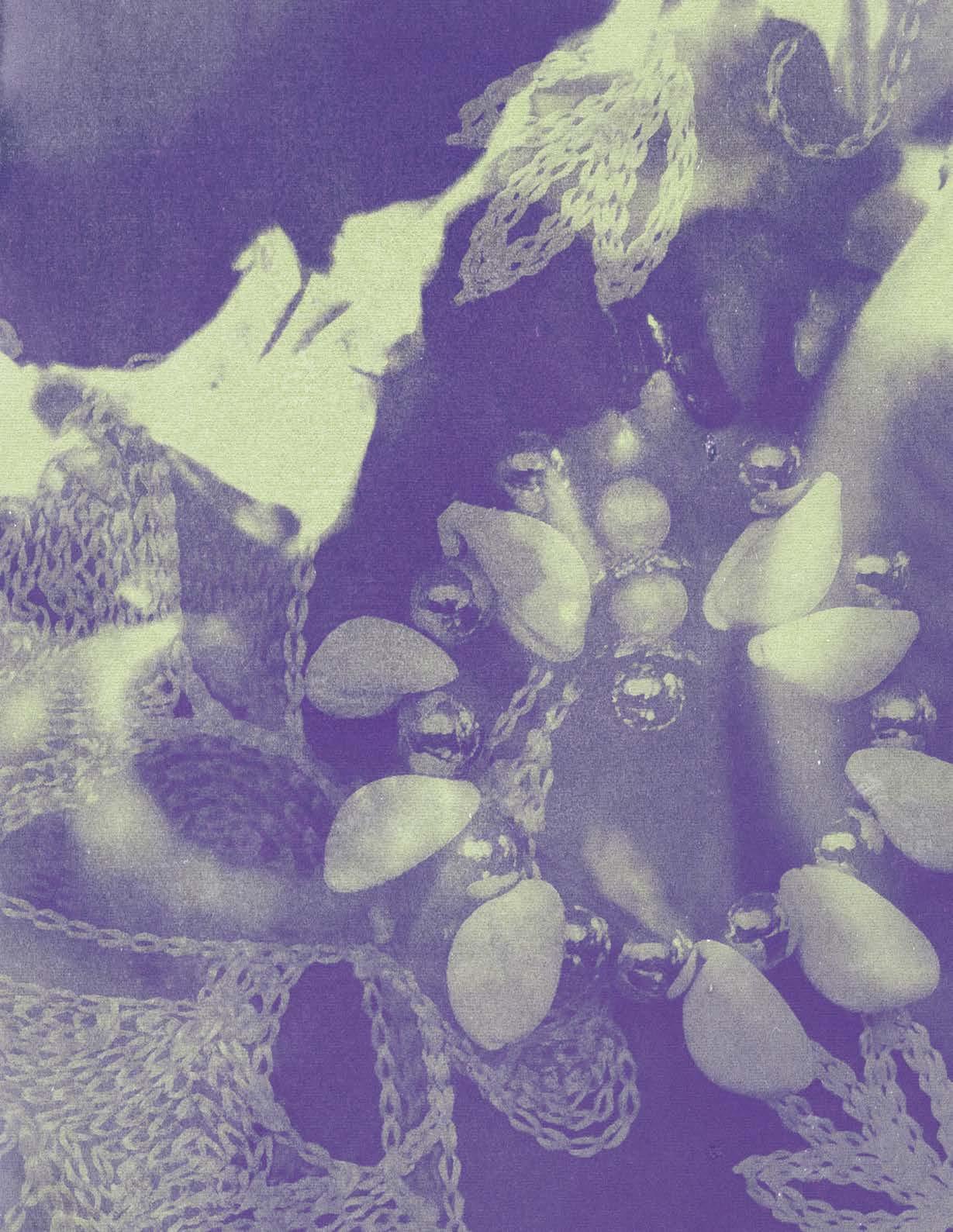

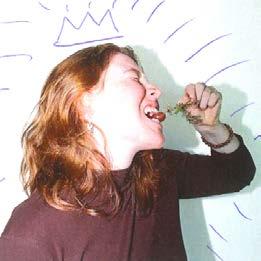
Co-Editors in Chief
Avery Nowicki (they/them)
Sara Brinkac (She :) They :D He :0)
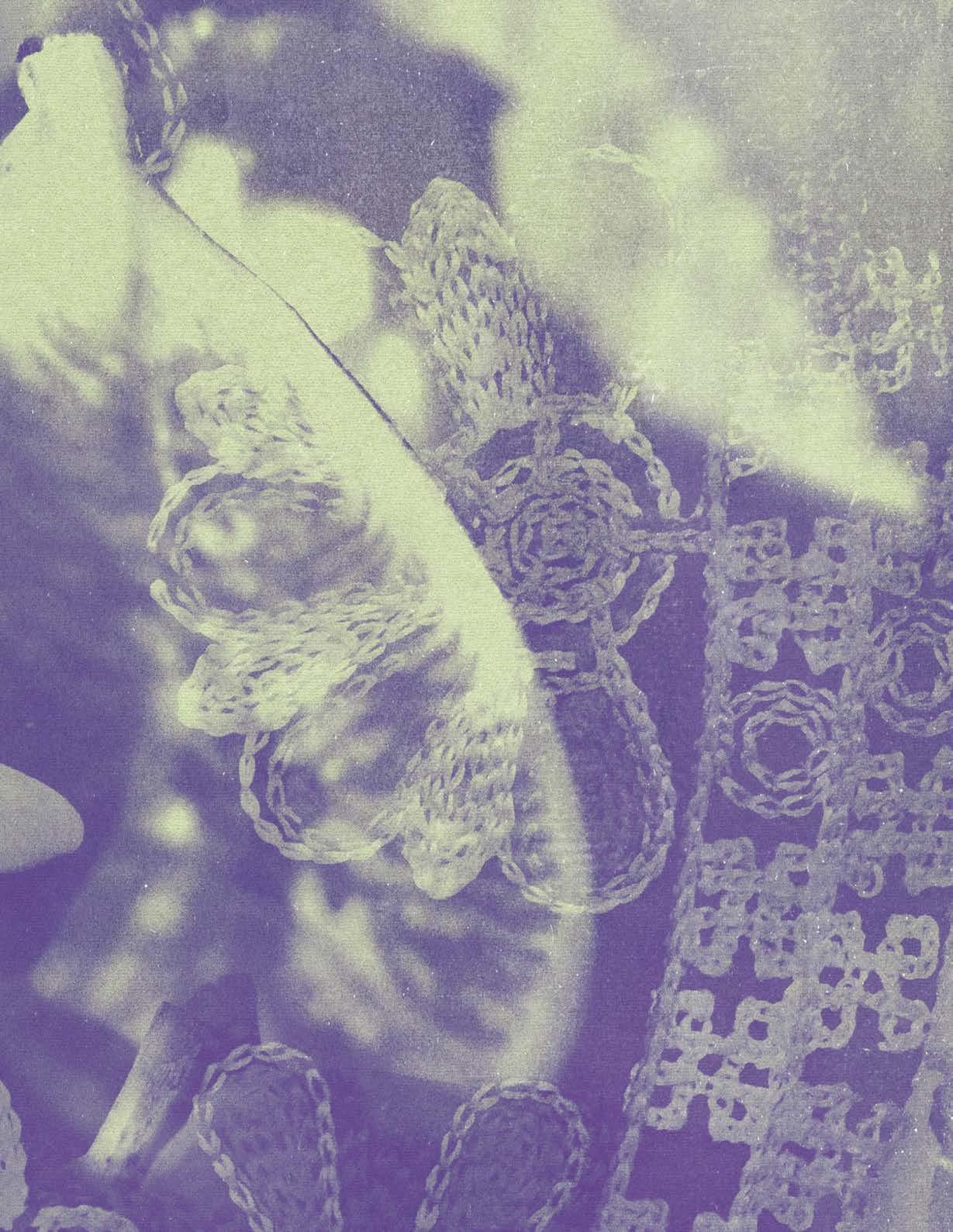
I owe my life to Love. I’m sure many of us do.
But Love is a concept beyond ourselves, quite hard to grasp. I agree with the zen master who said:
True Love brings joy to ourself and the ones we Love. If it does not bring joy, it is not true Love.
True Love is freedom.
True Love, according to Baldwin, is an unpopular cause.
To Cohen Love was a fire that disfigured us.
To our heartbreak Love is cruel.
In our desperate moments Love feels alien, But then as quick as we forget Love, it reappears, Pulling our dying bodies through turmoil Into the warmth of recovery and joy of life.
Then we sob.
We sob at Love’s feet, praying faithfully at its altar, Claiming it to be our lifeforce, Our answers to life,
Existing in Loves light becomes our aspiration. But how quickly we fall back into forgetfulness, Not sure where to go, demanding Love show itself
Seeking it in others,
Dissatisfied with what we are given,
Asking once again: what is Love?
What is this thing I know deep down I owe my life to?
This thing that was once so important to me, where did it go?
One wants to believe
We always make our way back, but some don’t. This alien concept we half believe suddenly rips life away.
So many have fallen in valleys
Where Love seems absent.
Terrifyingly high stakes enter the game. Love, to our horror, becomes a matter of life and death. We scramble.
To remember something.
Like scared children. We are sniveling and grasping. At a semblance of truth. Yet still. So often.
Love’s true identity is reduced to a desperate definition. Love itself morphs into the death and destruction our desperation seeks refuge from.
The begging for something we feel empty of Something we are sure we know and won’t rest
Until we feel that feeling. Give me that feeling. Give me Love.
I deserve Love.
Where is my Love?
Who will love me like I want to be loved?
A singer once cried out:
Not so much to be loved as to love.
The audience went silent for a moment.
Some quickly returned to seeking Love. Some paused.
Not so much to be loved as to love.
What do I Love?
Who do I Love?
What is my definition of Love?
Can I expand my definition of Love?
Perhaps I was wrong.
Perhaps those moments of Love I had,
Perhaps I only got some of the definition right, Perhaps Love was always there, But it just got covered up. Perhaps I just couldn’t see it, Perhaps I must begin to Love to see Love. But what is there to Love?
No one loves me. Why should I love them? Who loves me?
I drove my friend home last night at 4 AM. I was tired and it was far.
They have been working so hard lately, Under a lot of stress, I saved them a 40$ Uber. They drifted off into sleep in my warm car.
I drove them to their door.
Not even the Uber’s do that for them They said They were so happy.
I watch their life closely and I begin to Love. I stop expecting things and I begin to Love. I look at myself with loving eyes and I see my world with loving eyes.
I’m still not sure what Love is and I don’t have a way to get more.
But I have suspicion:
In myself lies the universe, When I love myself I love all, When I love all I see with Love, When I see with Love I see Love, When I see Love I receive Love, When I love I see Love and I receive Love So, I become Love.
What joy to see all the many dimensions of life. What Love breeds there.
Rather than sprinting towards a prison Defined by my own expectation I look without the assumption of knowledge, Take a pause and try to look with Love.
But what happens when I forget?
When I get lost?
When there is pain I need to seek refuge from—
Refuge from.
So Love is the absence of pain?
Yet is the cause for so much, Yet it is the pain we feel that drives us to Love. Is it possible, That in our pain, is also Love?
“The longer I live, the more deeply I learn that love — whether we call it friendship or family or romance — is the work of mirroring and magnifying each other’s light.” - James Baldwin
Be beautiful, be yourself, live with Love.
Sara Brinkac Co-EIC
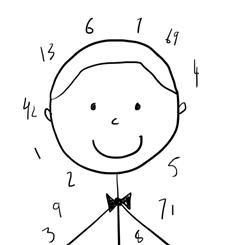
Business Manager
Prem Monpara business @capilanocourier.com

Social Media Manager
Glitter Esquivias socialmedia @capilanocourier.com
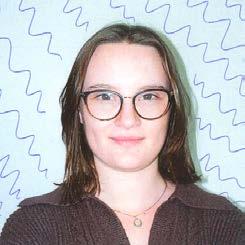

Video Production Manager
Laura Morales videoproduction @capilanocourier.com
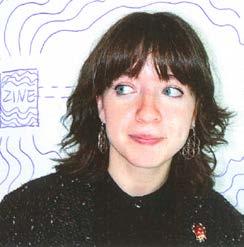
Zine Manager
Mia Lancaster zinemanager @capilanocourier.com
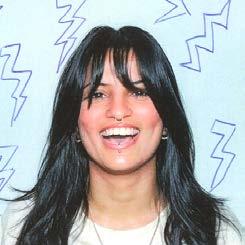

Production Manager Andy Poystila production @capilanocourier.com
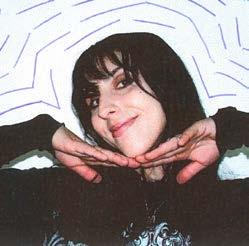
News Editor & Beat Reporter
Yasmine Modaresi newseditor @capilanocourier.com
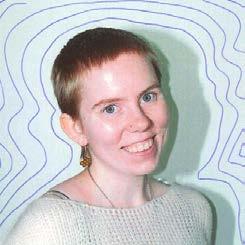
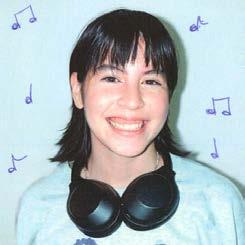
Art Director
Angelica Blanch design @capilanocourier.com
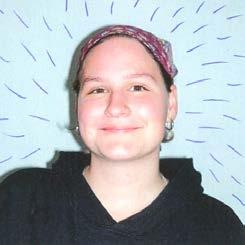
Sports Editor
Lea Krusemeyer sports @capilanocourier.com


Humour Editor
Adam Wallace humour @capilanocourier.com

Crew Writer
Kate Henderson crewwriterkate @capilanocourier.com

Crew Photographer
Sophie Serendip crewphotographer @capilanocourier.com
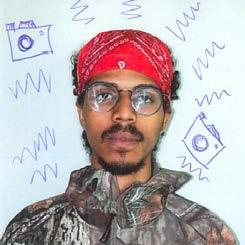
Videographer
Lucas Isidoro videographerlucas @capilanocourier.com
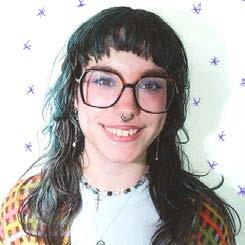
Crew Writer
Lily Rosen crewwriterlily @capilanocourier.com

Advising Manager
Freya Emery
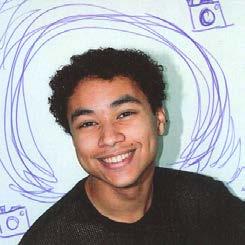
Videographer Christien Di Angello videographerchristien @capilanocourier.com

Crew Writer
Sean Finan crewwritersean @capilanocourier.com
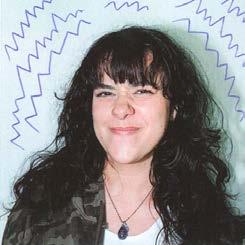
Videographer
Kiki Evans videographerkiki @capilanocourier.com
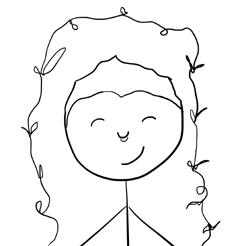
Crew Illustrator
Jordan Richert crewillustrator @capilanocourier.com
Luciana Mastrangelo, Jenna Luscombe, Eugenia de Coss, Jenna Luscombe, Cameron Reagon.
Kyla Seguiban, Freya Emery, Cameron Skorulski, Scarlett Side, Shruti Karthikeyan, Livvy Hung, JJ Eng, Sophia Filsoofi, Val Kruglikovskaya.
Cover Art & Photo Series
Sophie Serendip.
Head on over to capilanocourier.com for more featured articles!
Interested in contributing?
Email editor@capilanocourier.com for potential writers, and production@capilanocourier.com for interested illustrators and/or photographers. Illustrators and Photographers are required to send a portfolio or sample(s) of work.
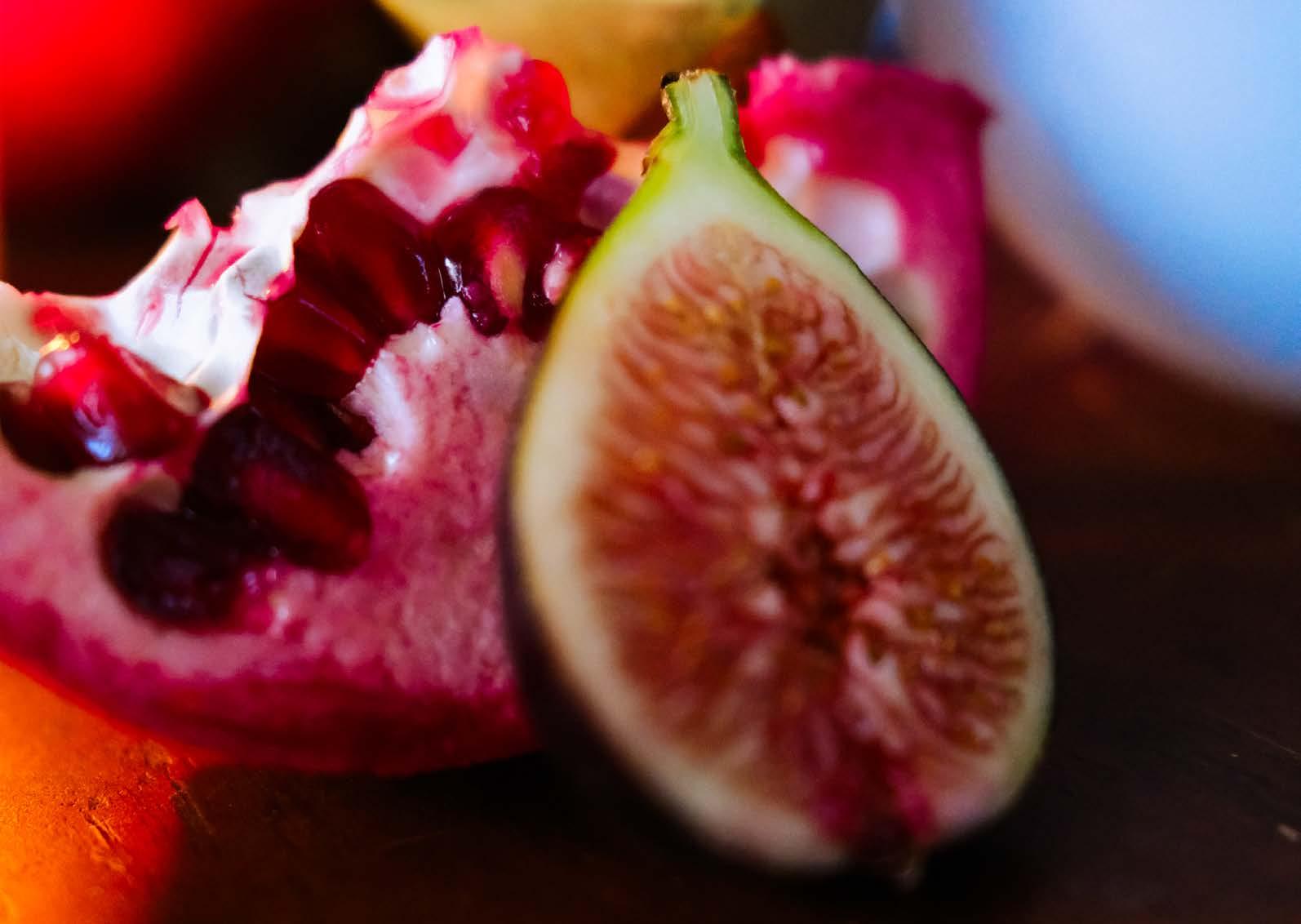



On December 20th, 2024, the MoveUP union sent an application to the BC Labor Relations Board (LRB) to include CapU student employees in their bargaining unit
Laura Morales-Padilla (she/her)
Video Production
Manager
Andy Poystila (he/him)
Illustrator
The Student Employee Programs is meant to provide an opportunity for students to obtain work experience and financial support, not to provide a source of cheap labour to the university. During the Capilano Students’ Union (CSU) Board of Directors meeting on January 26th, 2024, student employee Theodore Abbott voiced his concerns, saying, “The question of our wages [...] first came up when I realized that pay increases had not matched inflation. Not even close.” He requested that the CSU advocate for CapU students to be paid fairly, noting that CapU’s current rate is approximately $10 less than Simon Fraser University’s (SFU). According to Niko Williamson, one of the student organizers of the union drive, the main difference between the student employees at CapU and those at SFU is that the latter are unionized.“We currently make minimum wage because we do not have any bargaining power being non-unionized workers,” she says.
Faculty member Barry Magrill has been the supervisor of the Student Digital Ambassadors (SDAs) since the positions were created five years ago; he indicated that “they were paid at a rate that was about $3 an hour more than minimum wage at the time, and over the years minimum wage has gone up, but the SDA’s wage—tied to all the other student job wages—has not kept up with that buffer.”
The final push to start the union drive, Williamson shared, was seeing how the MoveUP strike in the summer of 2023 impacted
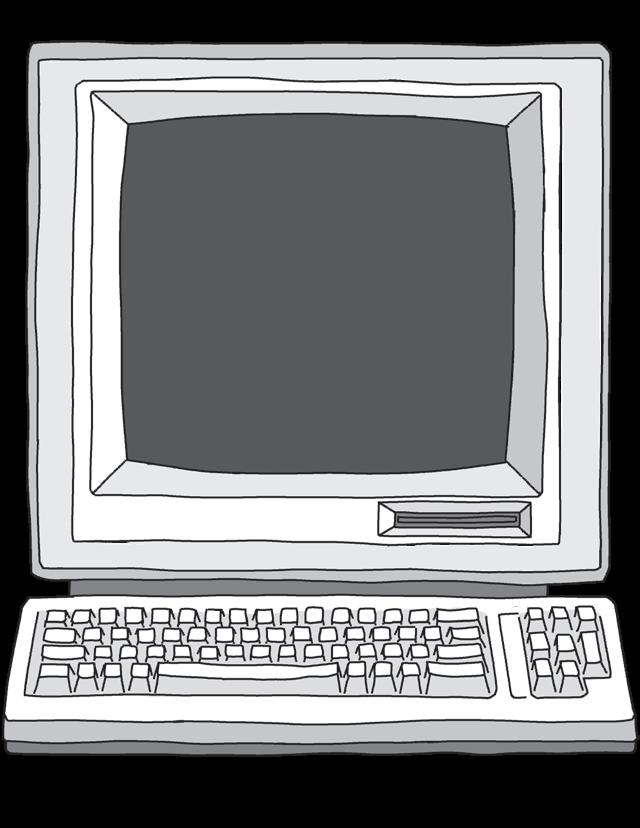

student employees. “When a union goes on strike, union members receive pay while they are on the picket line. However, for student employees who were unable to work due to the strike, there was no compensation,” she explained.
The Courier reached out to the university’s Senior Communications Officer for an interview about this application and the implications for CapU if student employees are ultimately included in this bargaining unit. Melissa Nichol, Strategic Director, People, Culture & Diversity, sent a statement.
Nichol points out, “Terms and conditions of employment would be negotiated by the union, and individual contractual flexibility between CapU and covered student employees would no longer be possible.” A supervisor who has been working at CapU, and part of MoveUP for over seven years, foresees that some flexibility would be lost concerning autonomy over position descriptions, duration of positions, and the number of postings.“As with any issue, there are pros and cons to both positions, however, I am in favour of adding to our membership [...] Students should have a resource to lean on if faced with unfair treatment from the employer and should benefit from the collective bargaining power of the CapU workforce,” they say.
On the other hand, individual contractual flexibility hasn’t allowed wage increase negotiations. Magrill advocated for better pay for the SDAs a couple of years ago, arguing that there is a lot of training involved in their role, making it a skilled job. As an explanation of why this wasn’t possible, he says,“I was told that all student employees were paid the same.” This raises the question of who is benefiting from this contractual flexibility. According to Abbott, who is an advocate for attaining livable wages for student employees, “We don’t want to be treated as gig-workers, we want dignified employment.”
MoveUP representative Javed Saheb responded to the concern of a reduced number of job postings as a consequence of higher wages for student employees, questioning,“Should the university be employing workers that they can’t actually pay a living wage to? Is this the example we want to set for young workers coming out of university and going into the workforce?”
On December 20th, 2024, the BC Labor Relations Board (LRB) received an application to include CapU student employees in the Canadian Office and Professional Employees Union, Local 378, also known as MoveUP, the union representing non-faculty and nonmanagement workers at CapU. Meanwhile, CapU was required to send a list of all student employees to verify that the required support of 45 per cent of student employees was met. The union withdrew the application right after CapU’s list was submitted, on December 24th, as they realized that the 41 membership cards collected didn’t meet the minimum threshold of 49.
It is a challenge to keep track of the number of student employees since they are distributed in multiple departments and are often hired for only four months, explained Williamson. Since the union drive organizers couldn’t get the official number until after the application was sent to the LRB, they had been building a list based on conversations with other student employees which led to 74 names. The list sent by the university on December 24th included a staggering 108 names. Student organizers were surprised by this number, but MoveUP representatives were indignant.
As it turns out, on October 4th, 2024, union representative Nathan Beausoleil requested a list of all student employees from Human Resources and, at the end of the month, received a list with 43 names. This was less than half of the names provided to the LRB four days after it was requested. “Apparently, the number of student employees at CapU depends on who’s asking,” commented one of the student organizers, who reviewed the list sent to the union and found that several student employee positions were
missing. This included career ambassadors, research assistants, residence advisors and peer tutors from the Writing Centre. Javed Saheb, the union representative who has been collaborating with student organizers, suspects that this, “inflating of the list at the application and providing the union with a substantially shorter list was a tactic used to avoid the workers getting fair representation. I hope the student workers take notice and know the union has not been deterred but rather, motivated to push forward.”
“I’m pro-union but I’m mainly pro-you-guys,” said a supervisor who has been assigned a student employee to support their role for the last five years. They explained that the flexibility student employees would like to maintain in terms of how many hours they work, the option of working remotely or the duration of their contracts are some of many aspects to be discussed with the union representatives and the university. They went on to say, “That’s what bargaining is for. But most importantly, with or without the union, don’t forget the power you have for being students. You are the main stakeholders.”

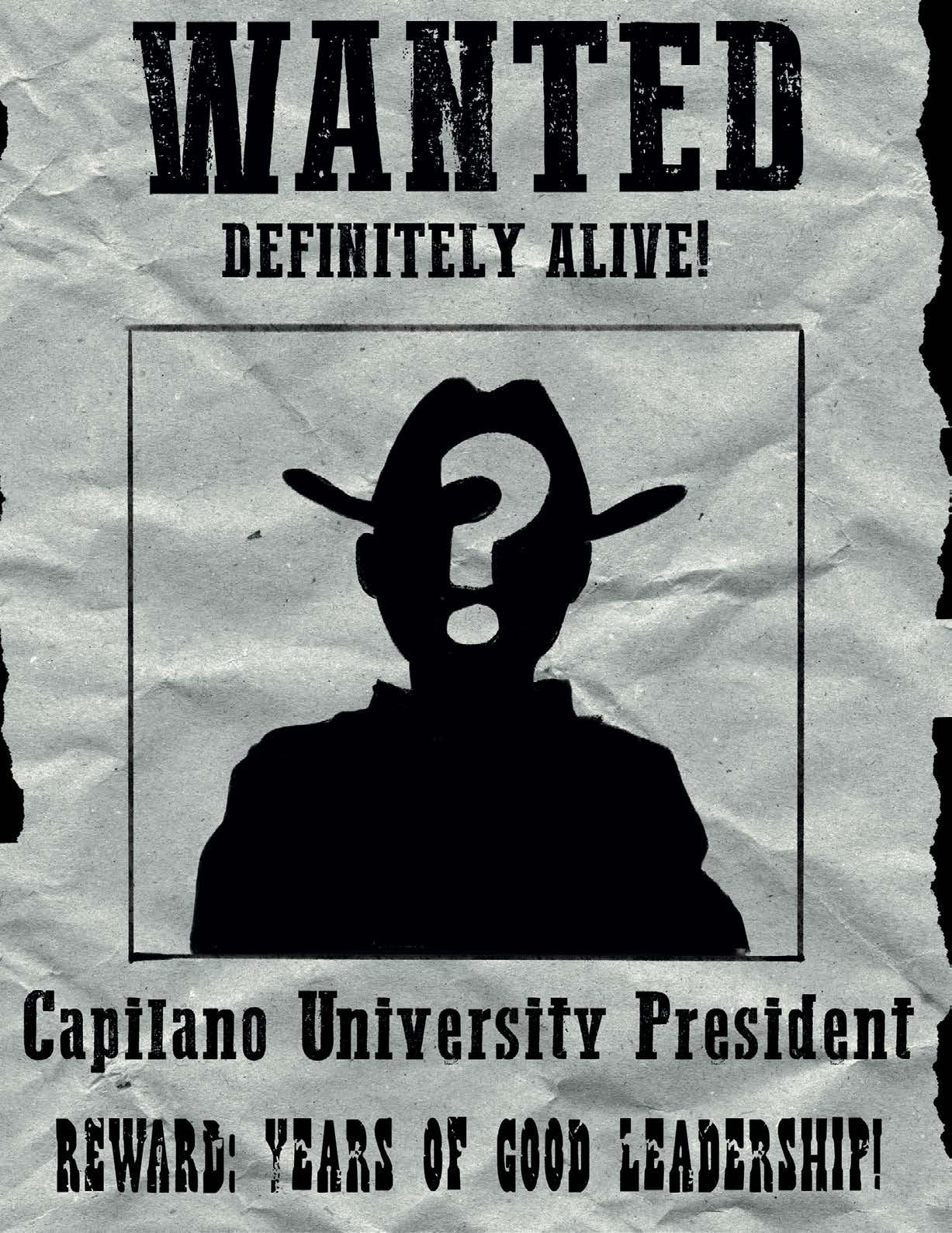
The search for Capilano University’s new president has been reset after all final candidates were deemed unsuitable, prompting a restart of the selection process
Luciana Mastrangelo (she/her)
Contributor
Kyla Seguiban (she/her)
Illustrator
Capilano University’s search for a new president is back to square one. At the Capilano Students’ Union (CSU) Board of Directors meeting, it was announced that none of the final candidates from the initial search were deemed suitable. As a result, a new search committee will be formed to restart the process.
The decision to reject all final candidates highlights the rigorous standards expected of CapU’s next leader. According to Girodat, the search procedure is jointly overseen by the university’s Board of Governors and Senate. This process ensures that student representation is included. “The university’s president search procedure provides two student representatives on the Presidential Search Committee,” Girodat said. “When the CSU receives notice from the university that the search committee is being re-established, those two student representatives will be determined by the CSU’s board of directors, on the recommendation of our university Affairs Committee.”
The initial search process involved multiple committees, including those representing the CSU, faculty and staff union MoveUP, who were given opportunities to provide feedback on the candidates. Despite this collaborative effort, none of the candidates met the required criteria.
Sanchit Kwatra, a member of the first Presidential Search Committee and a representative of CapU students, shared insights into the process: “As a member of the Presidential Search Committee, my role was to represent the students of CapU throughout the selection process, which included everything from reviewing resumes and CVs to participating in candidate interviews,” Kwatra explained. He emphasized the importance of evaluating candidates based on their
“Despite this collaborative effort, none of the candidates met the required criteria.”
engagement with CapU’s diverse student community, but noted that confidentiality limits what can be shared about the committee’s deliberations.
For many students, the idea of restarting raises concerns about the effectiveness of the search process and whether their voices are being adequately heard. Ensuring meaningful student representation will be critical as the new search begins.
One of the primary concerns is whether the process will fully address the unique needs of CapU’s diverse student population. The assurance that the CSU will again select student representatives for the committee provides some reassurance. However, questions remain about how the university will ensure that student voices are not only heard but actively integrated into decision-making. How much influence do the student representatives have during the selection process? Are their perspectives given equal weight compared to faculty and administrative input? These concerns reflect a broader uncertainty about whether the university prioritizes the needs of its students when making such critical decisions.
The decision to restart the search signals an opportunity to reassess priorities and refine the selection process. Girodat hinted at potential changes, including placing greater emphasis on qualities such as diversity, leadership experience and community engagement.
By placing greater emphasis on these qualities, CapU has an opportunity to select a leader who not only meets the institution’s high standards but also embodies its commitment to inclusivity, innovation and community-building. This renewed focus could set the tone for the university’s future and ensure its president is well-positioned to guide CapU into its next chapter.
As the university prepares to reconstitute the search committee, students and staff will be watching closely to see how the process unfolds. For now, the delay underscores the importance of finding the right candidate to guide CapU into its next chapter.
“For many students, the idea of restarting raises concerns about the effectiveness of the search process and whether their voices are being adequately heard.”
The
search for Capilano University’s new president has been reset after all final candidates were deemed unsuitable, prompting a restart of the selection process
The Capilano Student Union (CSU) is a democratically run government and the only official student governance organization at Capilano University. A foundational value of the CSU is that it exists to serve CapU students and their interests, making it a body of governance designed by students, for students. The goal is to represent the interests and welfare of the student body as a whole, regardless of whether they are domestic or international, full-time or part-time, or traditional or mature learners. To meet these broad goals, the CSU and its members organize to collectively pursue projects of advocacy work and provide services such as legal aid, academic support, access to clubs, and health and dental plans. They also organize events and activities for the student body. Needless to say, being a member of the CSU is a demanding job to take on, and because of this and other factors, the consensus at the CSU, until recently, was that all candidates for democratic election into the CSU, as well as current members, must maintain a minimum Grade Point Average (GPA) of 2.0. However, this longstanding bylaw has recently been unanimously approved for amendment in Fall of 2024.
Yasmine Modaresi (she/her)
News Editor
Freya Emery (she/her)
Illustrator
As a democratic student government, the goal of the CSU is to represent the best interests of the student body. As previously mentioned, this goal includes representing all members of the student body. Although the detailed reasoning behind the appeal to the GPA bylaw is not publicly available, analyzing the nature of student government in the past, and in the present across institutions can provide intriguing insight into the pros and cons of such a change to the current bylaw.
To begin, what exactly inspired this interest in revoking the GPA bylaw? Many students had come forward expressing concern for the bylaw, and requesting that a 2.0 GPA maintenance be removed as a requirement, which is a request that has been considered very carefully. One of the most obvious reasons for this appeal—which was stated as a factor by some of the students advocating that the bylaw be overturned—is that as a democratic organization, the CSU must give all students equal rights in elections and facilitate a system where the student body can decide who their leaders are. With the current bylaw, students who may be desirable leaders to the student body, or possess a range of important skills aside from those related
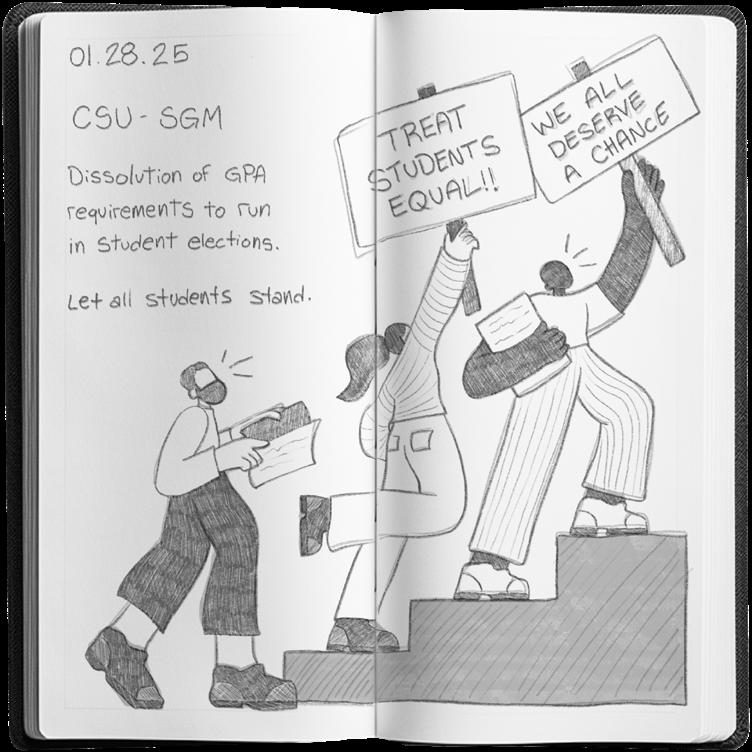
to academia, are automatically disqualified if they fail to meet GPA requirements. As stated in the official appeal draft, “Restricting students to stand in CSU elections on the basis of academic standing is taking a right away from them.”
Despite the very valid concerns of the GPA requirement threatening the democratic foundation of the CSU, there are some benefits to student success that are linked to a minimum GPA requirement. For example, the bylaw encourages a healthy balance of commitments; students who desire to become active in school governance are required to only take on as much as they can handle, thus balancing professional and academic responsibilities. Additionally, CapU strives to maintain a reputation of academic excellence and integrity on par with those of other reputable universities and colleges within the province. However, the bylaw cultivates exclusivity that is not in the interest of democratic organization in student government by excluding capable and passionate individuals from participating in student governance. Minimum GPA requirements can lead to an undervaluing of
non-academic skills and experience, such as leadership, communication, networking and organizational skills that are predominantly gained through hands-on experience outside of academic pursuits (e.g., political involvement, volunteering with nonprofits, work experience, etc).
Discussions surrounding the relationship between student leadership experience and academic responsibilities are not unique to the CSU. Whether it is a conversation between a secondary student and their high school academic counsellor, or this current discussion, examining how democratically run student government can maintain internal structure while simultaneously promoting the best interest of students is a topic that is always relevant. The reality is that the proposal to repeal the GPA requirements for student council members and interested individuals within the greater student body presents a plethora of complex issues, both sides of which (i.e. pro versus opposed) can successfully be argued for or against. On January 28th, 2025, the Governance Committee will be hosting a general meeting to discuss the details of the appeal.
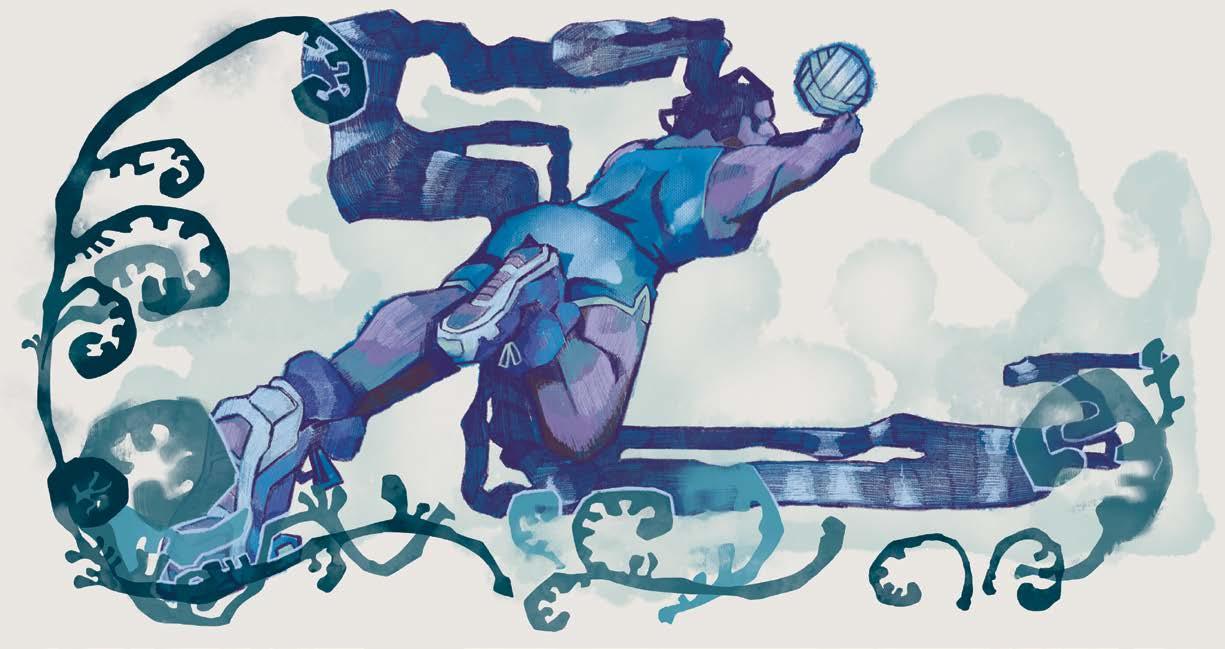
Bubble braids, kicking ass and the emergence of new mascot: CapU Blues Baby
Henderson (she/they)
Cameron Skorulski (he/him)
After navigating the maze of concrete at Douglas College’s New Westminster campus, I finally found the Douglas gymnasium, where the Capilano University Blues women’s volleyball team faced off against the Douglas College Royals. As the teams assembled in rows to announce and celebrate each player’s position, one thing was clear: bubble braids were the top hairstyle of the day, with CapU’s team sporting them alongside star-shaped hair clips. But don’t mistake these for mere hairstyles, they were helmets, armed for battle in the showdown between the Blues and the Royals.
As the game kicked off, the players took their positions. One referee climbed to his podium, others with large red flags were stationed in the corners, and a man whose role I could only describe as ‘ball guy’ took his post, ready to supply fresh volleyballs as needed. The momentum built quickly, with CapU closely trailing Douglas’s score. By the second timeout, the teams were tied at 17–17. Amid spikes, blocks and huddles, the referees made countless hand signals, including one for when the ball hit the ceiling. After much floor-skidding action, CapU claimed victory in the first set, 25–23.
Once the Blues found their rhythm, the game was impossible to ignore; not just for the action on the court but also for the spectacles in the audience. There was a baby decked out in Blues merchandise (CapU Blues Baby!), shirtless men snoozing on a table behind the Royals team and, of course, ‘ball guy,’
relentlessly returning volleyballs to the game. Sitting behind me was the Blues men’s volleyball team. I spoke with Shub Wander and Cole Appleton, Science and Interdisciplinary Studies students at CapU respectively. Wander mentioned the women’s team had just a week of practices leading up to this game, yet they were “holding it up” in their first match of the new year. Appleton added that their last game was on November 27. Despite a month-long hiatus due to the school’s annual winter break, the CapU women’s team didn’t show any rust, winning the second set 25–19.
It’s amazing how much volleyball players flip and dive. As the third set began, players performed somersaults and threeperson saves, leaping from the highest reaches on their toes to crouching slides on the floor. Sometimes, three players even collide while going for the same ball. These efforts came at full force, and CapU dominated, winning the set 15–3. The fourth and final set was a masterclass in teamwork and skill. From blocks to spikes to volleys, the Blues held their ground, securing a decisive 25–9 victory.
I turned to spot ‘ball guy,’ but he had vanished, likely retreating to his hideout, awaiting the next game’s signal to spring back into action. As the game ended, the team formed a victorious semicircle, exchanging high-fives, their bubble braids bouncing, while the audience, parents included, cheered.
Navigating the nuanced road path from disordered sport to a healthy routine
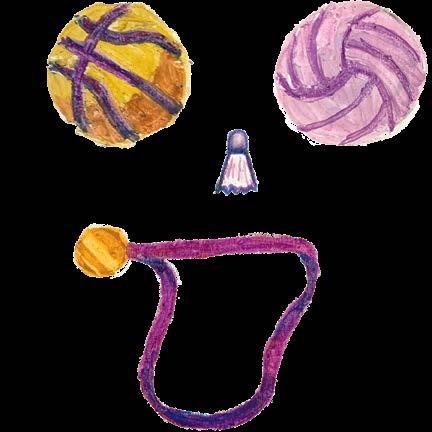
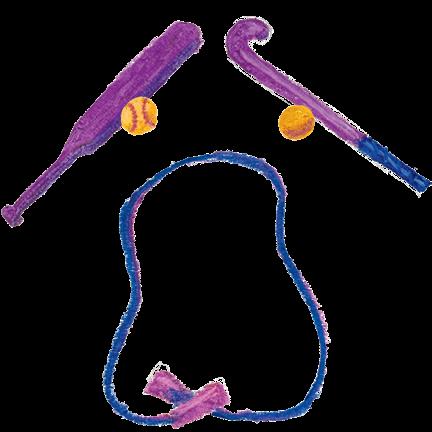
For as long as I can remember, sports have been a part of my life. Growing up, I wasn’t just encouraged to stay active, I was expected to. Whether it was swimming lessons, gymnastics, Taekwondo or weekend tennis tournaments, my schedule was filled with activities designed to get me moving. It seemed like a good thing at the time. After all, exercise is supposed to be fun, right? But for me, it never felt that way.
From an early age, I was told I was overweight. It wasn’t always said with words, but it was there in the way relatives commented on my size, in the way coaches pushed me harder than others, in the way other kids teased me. Sports quickly became less about enjoyment and more about trying to fit into a mould I didn’t ask to be part of.
I threw myself into activities, hoping that the hours spent sweating would eventually translate into the version of myself I was told I needed to become. But no matter how many laps I swam, tennis tournaments I played and Taekwondo lessons I attended, the weight didn’t come off the way I was promised it would. The numbers on the scale became a measure of failure rather than progress, and every failed attempt at ‘fixing’ my body made me resent the very thing that was supposed to bring me joy.
Still, I didn’t stop. I stayed active because I thought I had to, not because I wanted to. Sports became a chore, an obligation, something I tolerated rather than embraced. I’d look around at people who genuinely seemed to love running or swimming and wonder what I was missing. How could they enjoy something that felt so tied to shame for me?
The turning point came last year, but not in the way I expected. It wasn’t because I found some magical sport or stumbled upon a workout routine that clicked. It was because I finally started to like my body as it was. After years of chasing an ideal that was never going to happen, I began to unlearn the idea that my worth was tied to my size.
This wasn’t an overnight transformation. It took time, a lot of reflection, and the realization that I had been sold the lie that my body needed to change to deserve love and respect. Once I started to see my body not as something to fix but as something to care for, everything shifted.
For the first time, I stepped into a gym without the weight of expectation. I wasn’t there to lose weight or to prove anything to anyone. I was there because I wanted to see what my body could do. I started small, trying exercises I used to avoid
because I thought I wouldn’t be good at them. And to my surprise, I found myself enjoying it.
Zumba became a favourite. There was something empowering about watching my body remember routines, about realizing I could follow the instructor faster today than I could last week. It wasn’t about the scale or how I looked in the mirror. It was about feeling capable.
Running, something I used to dread, also began to change for me. I stopped focusing on how far or how fast I could go and started running just to clear my mind, Podcast on and thoughts off. With every step, I felt a little more in tune with myself.
“The gym became a place of celebration rather than punishment” *** ***
What surprised me the most was how much joy I started to feel in these moments. The gym became a place of celebration rather than punishment, a space where I could push my limits not because I hated my body but because I appreciated it.
Looking back, I realize the problem wasn’t with sports themselves, it was with the narrative I had been handed about why I should do them. For so long, exercise had been framed as a means to an end, a way to achieve a ‘better’ version of myself. But now, I see it differently. Sports aren’t about fixing myself; they’re about celebrating who I already am.
Today, I feel at home in my body, and that has made all the difference. Sports have become a source of joy and connection, and a way to honour what my body can do rather than punish it for what it can’t. I wish I could go back and tell my younger self that she didn’t need to change a thing, that she was enough just as she was.
It’s taken years, but I’ve finally found the joy in motion. And for the first time, it feels like it was worth the wait.
24 Contributor
Illustrator

“In my own life, revolution reminds me that my generation is here to bear the weight of history’s mistakes.”
History is but an endless cycle of revolutions and revelations. Colonies revolted against British rule and the United States was formed. French citizens overthrew the monarchy to create a new republic. A man named George Floyd was murdered by police officers, and hundreds of thousands of people in North America marched for the Black Lives Matter movement. A man shot the CEO of a health insurance company and social media erupted in a frenzy. Revolutions are all around us, happening constantly. They can be big or small, loud or quiet, and can sometimes be as simple as a Black woman refusing to give up her seat on a bus. Even personal transformations—like changing a mindset, picking up a new habit or standing up for oneself—can be revolutionary in their own way. From grand uprisings that overthrow regimes to small personal shifts that alter perspectives, revolutions remind us that change is both inevitable and essential, but not always easy.
Revolutions come in many forms, each with its own methods and impact, and are not strictly rooted in violence. A fifteenyear-old student named Greta Thunberg skipped school to protest outside the Swedish parliament and inspired students across the globe to stand up for climate activism. Sadako Sasaki, a young girl affected by the Hiroshima bombing, began folding paper cranes as a symbol of peace. Though she passed away, her classmates completed the task, and the Children’s Peace Monument in Hiroshima was created as a reminder of the effects on young people during tragedies. Tarana Burke used the phrase “Me Too” to support survivors of sexual violence, encouraging them to share their stories on social media to reduce stigma.
Music has played a crucial role in revolutions, serving as a tool to inspire, unify and mobilize people. “A Change Is Gonna Come,” a powerful song written and performed by American soul singer Sam Cooke, became an anthem for the Civil
Rights Movement in the United States, symbolizing hope and resilience in the face of systemic racism and social injustice. Rap artist Macklemore also uses his voice to address social issues and spread awareness. His recent song “HIND’S HALL” calls out the threat of white supremacy and brings attention to the genocide in Palestine. My own personal favourite is “Blowin’ In The Wind,” by Bob Dylan, which protests war in favour of peace and freedom.
I work in the West Vancouver Senior Center part-time, and I asked a group of regular patrons what revolution means to them. They told me technology and community is what they think of when talking about change. “Places like this Senior Center didn’t exist back when I was younger…now we have somewhere to age together and not feel isolated from society,” one of them told me.
In my own life, revolution reminds me that my generation is here to bear the weight of history’s mistakes. In the face of climate change and political tensions, students like myself feel an immense pressure to leave the world better than we found it, but we don’t know how. We must remember that it’s normal to be afraid to use your voice publicly, and not everything needs to be heard widely to make a difference. Sometimes small acts can have immense ripple effects. Voting in local elections, volunteering and even helping a friend in need are small steps we can take as a community. Every individual’s talents can be used for a greater benefit, whether it be art, writing or even cooking.
The world is a restless, ever-evolving place, and it is humanity’s duty to ensure it keeps on spinning. Art imitates life, life imitates art, and on and on it goes. Everyone has the ability to change the world, and it’s time for our generation to carry the torch and keep it burning.
25
Dear Dad,
You were a father that provided the best opportunities, financial support and parental guidance. You were an amazing father for your family and a respectful man, except that you needed to take more care of yourself. You forgot to take your medications and go to follow-ups with the doctors.
You made sure that we had the best care when being sick. You ended up being the sickest of all. You left the world on a weekend, without any red flags or goodbyes. I wasn’t aware of your real health status until clues came with the days: the bloodwork request paper laying on the bottom drawer, the comments from your friends of your passing and the medical tests that showed something was off. You should have understood that you needed to be healthy to keep providing support. Your death could have been prevented.
I wish that things would have gone differently in your balance of family and work. Work was equally as valuable as your own health and without any ineffective shortcuts. A supplement doesn’t change a trip to the doctor or a medication prescription.
On the bright side, I witnessed your perseverance of hard work and self-confidence. You never let any challenges or mistakes shatter your goals. I have always admired that age was never a limit in your goals, even when you also had family responsibility.
Being optimistic is a desirable but dangerous skill. You lack understanding of potential events or illness. You are the one who had the worst luck, stuck in the wrong time and place. It only takes one mistake to lose everything you have.
You have shown me immense love. Unconditional love that no lover or pet can provide. A warm feeling where there is almost forgiveness, open listening and willingness for mutual understanding. You have shown that the love of a father to his family is a privilege that shines like gold and is deeply endlessly cherished. Your father figure provided a way of love that no other person can produce. I feel nostalgia, sadness, gratitude and love when I think about your efforts and your example of caring for your family with the best quality possible.
I remembered you as a dad who was willing to work more hours to get more income for food, health care and better educational opportunities.
You approach work with resiliency and adaptability through hard times, such as the beginning of the pandemic. You occasionally had your bitter reactions but stepped up to make up for a solution. I could tell that you always strive for self-development and care for your family.
Even though I have an immense wish that you could have slowed down your work life and took better care of your health, I will always have you as a primary example. The image of a man who was trying his hardest to provide for the people he loved. You always tried to improve your life and engage deeply with others while keeping priorities in the first place.
You managed to cherish the family moments that we shared, such as the hikes to the forest or watching movies in the living room.
Eugenia de Coss (she/her)
Contributor
Keeping a soft remainder of top priorities, including working hard enough in school and work. Yet, you always had a generous understanding when things got complicated until you made a bad judgement. I will always admire how you had a balance between achievements and compassion.
Your coworkers and some of your friends might have forgotten about you, if they haven’t already. But your family will remember you, every moment in your life as the image of a man who worked hard to love and take care of his family. He did what he thought was best.
Love, your daughter
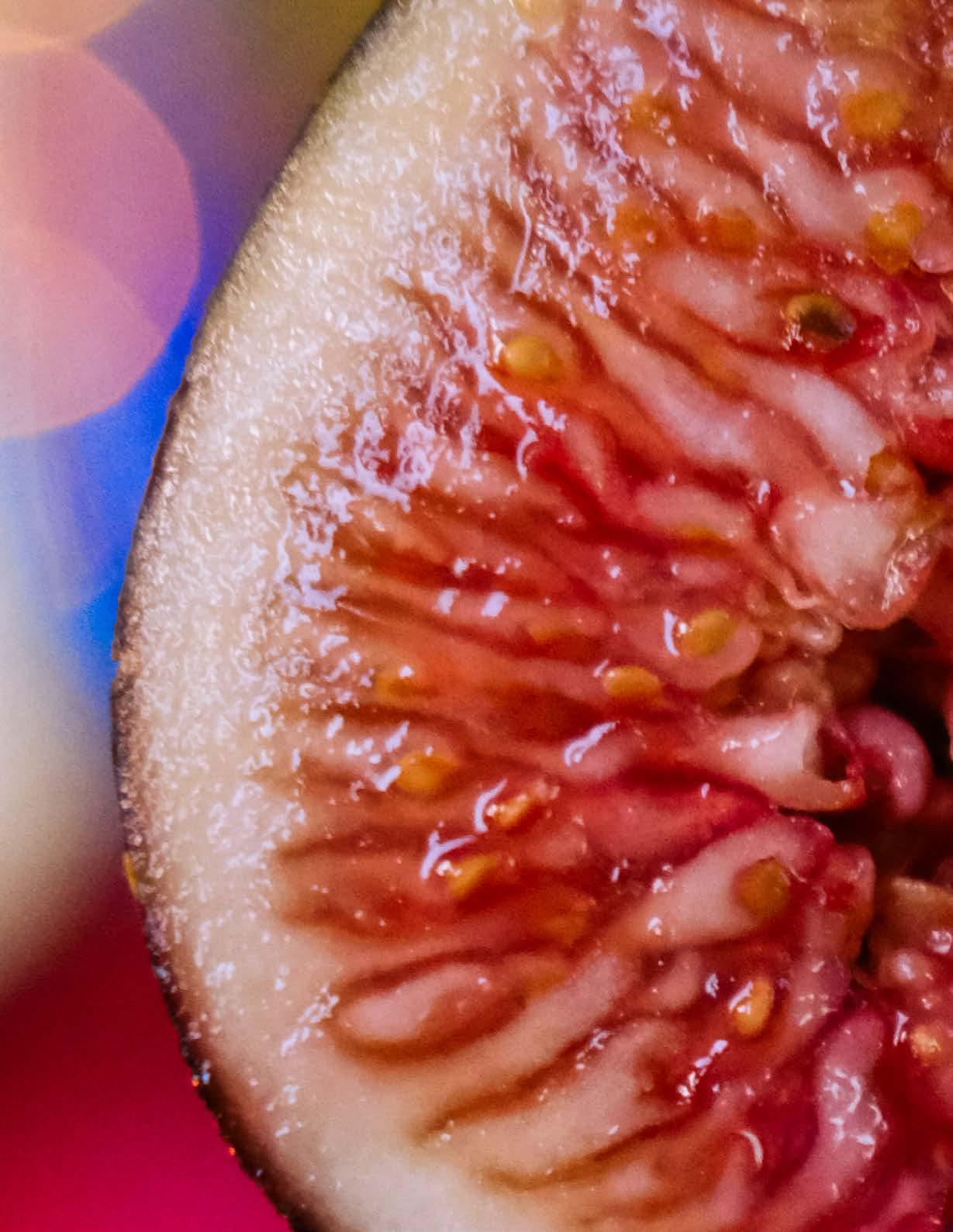
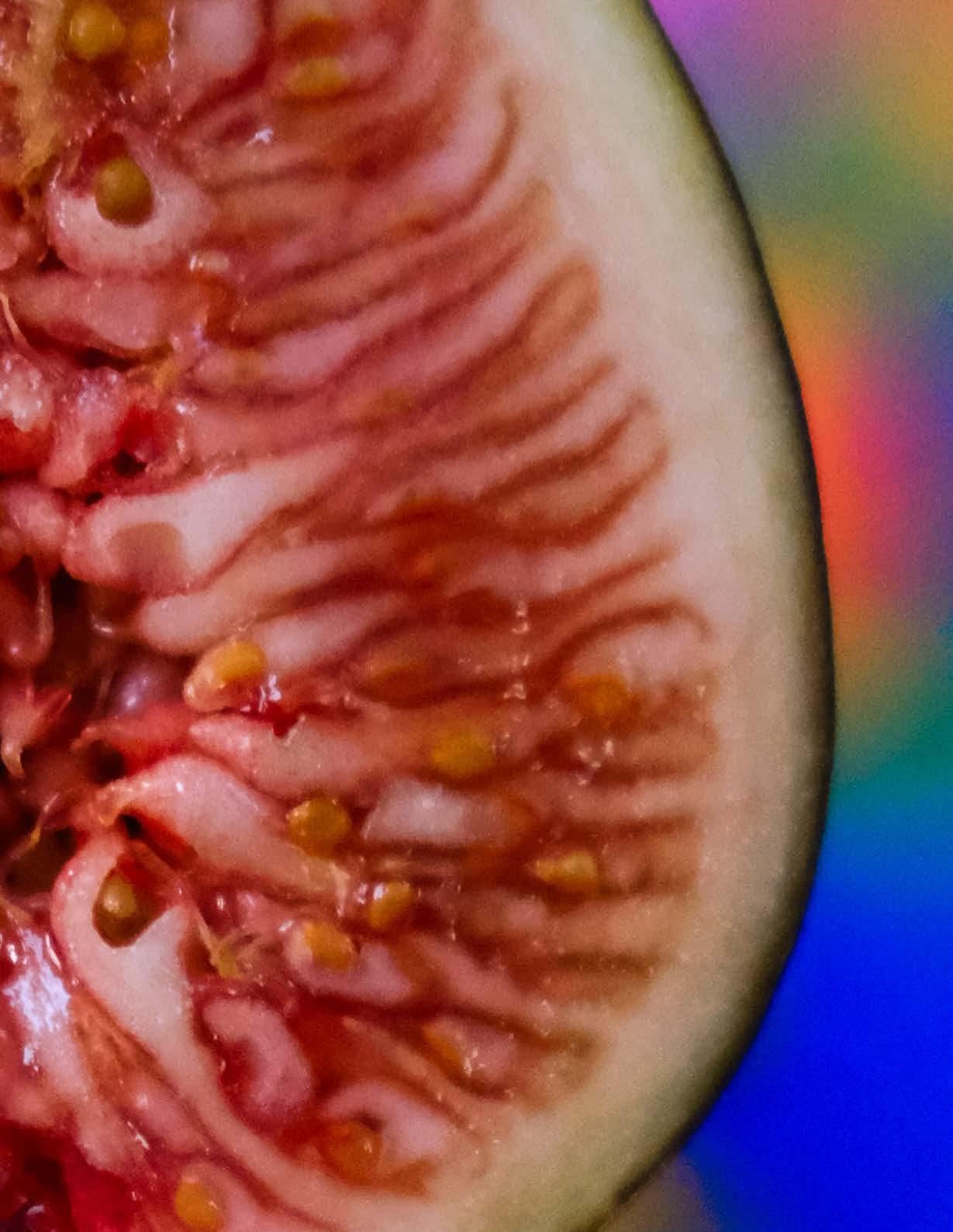

Gwen Pemberton
(she/her)
Angelica Blanch (she/her)
Illustrator
There are so many breweries on the North Shore that it can be hard to decide which to visit on a night off. B.C.’s lower mainland is home to over 220 craft breweries, so decision paralysis is totally understandable. Last year, the Courier explored some of the North Vancouver brewery district, located just up the hill from Capilano University’s Lonsdale campus. There are many more craft breweries near both campuses to check out, so it’s time for part two.
Located a short walk from Phibbs Exchange, many CapU students will have seen Wildeye’s patio and black brick facade from a bus window, but how many have ventured inside? Well, now they have more reason than ever, because in October 2024 Wildeye announced it would partner with CapU to offer a 15 per cent discount to all students, faculty and staff.
Wildeye is a great choice if you want a little more out of your visit than just a pint. It hosts a variety of events, including live music, music bingo and weekly trivia. A word of warning though, if you want to get in on that trivia night—every Wednesday from 8 p.m. to close—make sure you reserve a table ahead of time. It’s not uncommon for the taproom to fill up on Wednesday nights, and I’ve definitely seen people get turned away.
The warm wooden interior is cozy and inviting. It’s more of a sit-down establishment than some other places on this list, so if you are looking to grab some food and relax, this is a good spot. The bistro offers small bites like pretzels, plus mainstay faves like pizza, tacos and sandwiches. But the real main event, no surprise, is the beer. Their taps are rotating, so offerings may change from season to season, but expect to see some classics, some seasonal favourites like stout in the colder months, and brewery must-haves like sours and IPAs.
One of my absolute favourites is the Czech-style pilsner, a Wildeye mainstay. A pilsner is a clean and crisp kind of lager that tends to be a bit hoppier (that’s that slightly bitter flavour) than other lagers. They are also clearer in colour, which can help you differentiate them from their peers. Wildeye’s is crisp and light, while still maintaining that hoppy profile I love. Of course, tastes will vary, but this place has a beer for every palate. Trust me, I’ve taken a few people to visit.
123 Carrie Cates Ct.
Strathcona Beer Company is a relatively new addition to Lower Lonsdale. In fact, until mid-January, right after I visited, they were still operating on a provisional liquor license. But have no fear, Strathcona is fully up and running now, taking over the spot in the Lonsdale Quay Market that, until recently, was occupied by Green Leaf Brewing Company. The brewery is literally steps from the CapU Lonsdale campus, and a nice place to go for a chill drink and a chat after class (at least that’s what I did).
The dark green walls and crisp white tabletops look like something off of a Pinterest board, especially with the floorto-ceiling windows looking out at the water. Being so new, the place is still finding its footing, but the atmosphere was lovely. Strathcona North feels a bit fancier than your typical brewpub, though still casual. It’s up to you which vibe you want.
I liked the pilsner—you may notice a theme—but the menu was a bit IPA heavy for me. If that’s your jam, then fantastic! Strathcona is a must-visit for you. That’s the beauty of the craft beer scene here, there is a brewery that caters to everyone’s taste. Strathcona also has a stacked food menu featuring scallops, flatbreads, burgers and plenty of appetizers. If you want more of a restaurant experience and a great view to go with it, give this place a try.
288 Esplanade E
Shaketown brings us back to the tried and true North Vancouver brewery district. Just up the street from Lower Lonsdale, this place is one of many craft breweries lining E Esplanade. Keep an eye out for the patio string lights on the corner and you’ve found the spot. It’s relatively small, but worth a visit.
Shaketown is great for anyone, whether you’re just popping in for a quick drink, or want to settle in for a while. There are a plethora of card games and board games to choose from, and while I sipped my beer I was entertained by a couple playing an intense game of Connect Four a few tables over. It was a quiet Sunday night when I visited, but the staff were very helpful. I was trying to stray away from my faithful pilsner and they offered me a few samples to blind taste test. Guess which one was my favourite. Yep, I guess some habits die hard.
I sat for a while and watched the Commanders and Buccaneers run into each other on TV, and enjoyed people-watching out the windows. This is one of my favourite kinds of breweries, if I’m honest. No frills here. Just beers, good company and some munchie mix at the bar for snacking. As the game approached half-time I remembered that I’m not a huge football fan and headed to my fourth, and final, stop. Conveniently, it was only about 100 meters away.
North Point was, quite literally, around the corner. It has an alpine cabin vibe, which was accentuated by the woodburning fireplace and the timber-paneled accent wall. This was a great place to finish off my mini bar crawl, and as it turned out, to watch the rest of the football game. At the end of a Sunday night, North Point was also fairly quiet, which meant I had the downstairs—complete with its full-size projector— almost to myself.
Curling up on a bench with a fire going and a pint in hand, I watched the 10-10 score at halftime go back and forth, but I must admit, I left before it ended. I finally managed to drink something other than pilsner though. The Strawberry Blonde Ale was light, punchy and refreshing. I would highly recommend it if you like a fruitier flavour without straying into sour territory.
The optimal word for this place is cozy. If you’re looking for accompanying eats, they have house-made pizza and some light snacks, too. The tap menu is very diverse, so it might be a good place to try a flight if you are looking to expand your horizons. I feel much more confident making assertions about beer than football. Commanders won, by the way.
I really enjoyed getting to try out even more of the craft breweries the city has to offer, and I’ve been to quite a few. Over time, I have come to accept the label of ‘beer guy,’ if not with pride then at least a shrug and a smile. I can confidently say I liked everything that I tried. But when visiting a brewery, it’s about more than the beer. The atmosphere at each of these North Vancouver establishments was different, offering something unique to the people who step inside. Hopefully, there is something here to pique everyone’s interest. Hop-head or casual enjoyer, there is a place nearby to check out.
“Over time, I have come to accept the label of ‘beer guy,’ if not with pride then at least a shrug and a smile. ”
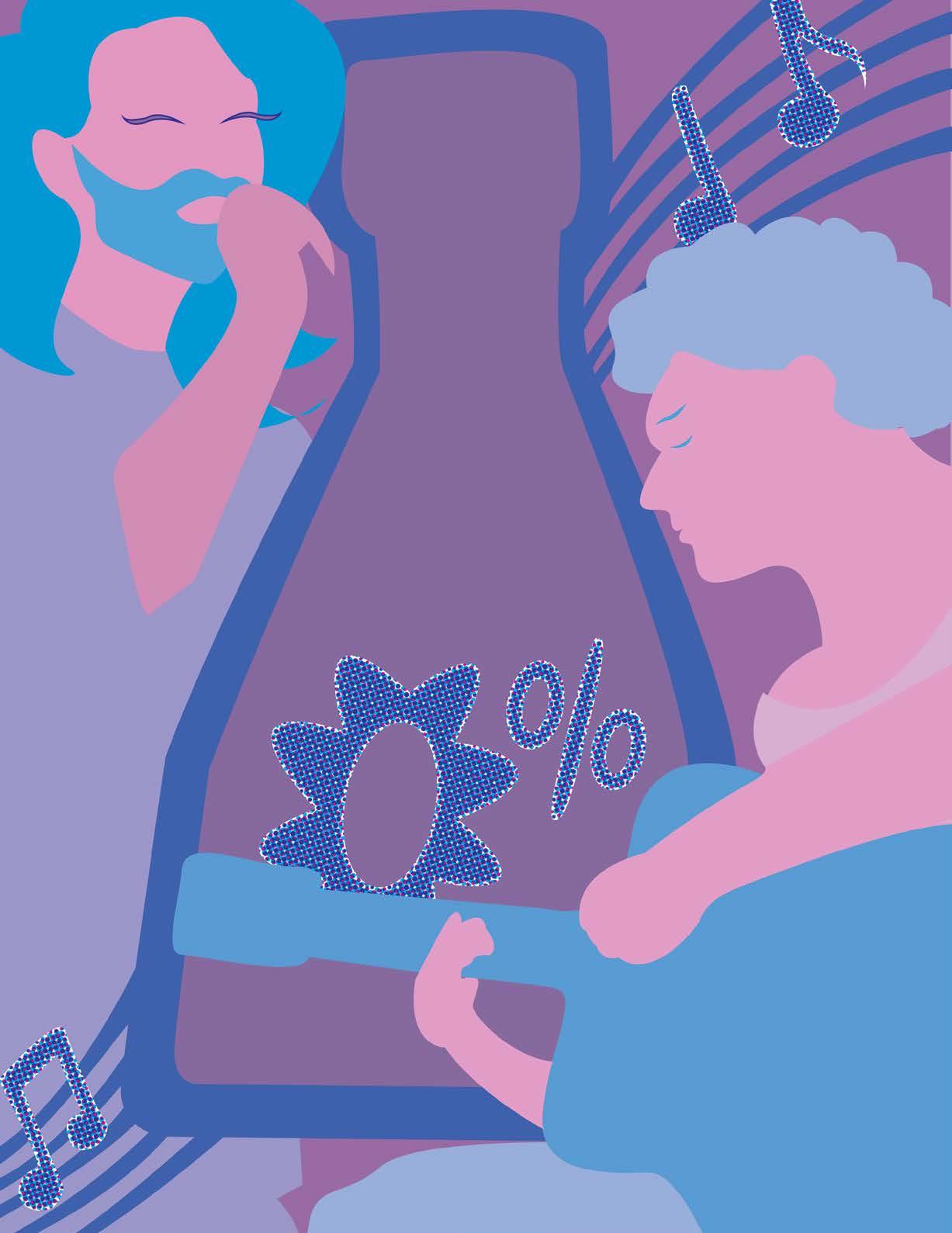
I’ve had problems with liquor spanning back to high school, but the culture of binge drinking combined with the easy recovery of a teenage hangover blurred my ability to recognize it. While I always had a feeling I wasn’t a ‘responsible drinker,’ it wasn’t until I hit 20 that I started to realize I had a serious problem. Over the next few years, I would spend months sober here and there, but would always fall back into old habits and get severely wasted, mostly alone and struggling to beat a level of Lego Star Wars. It took until 2024 for my sobriety to stick, hopefully for good, but one day at a time nonetheless.
When you quit liquor, you really begin to take stock of just how much our culture wants you to take the first drink. It’s hard to escape the immediate availability of a seemingly innocuous craft beer or a nice glass of wine, and you start to get a false sense that the only way you can have a good night out is by partaking. That’s where sober communities like Club Soda come in.
Founded by Conor Levesque, Club Soda began with By the Hour Comedy in January 2024 which stemmed from Levesque’s desire to perform stand-up outside of alcohol-serving venues. “I knew that if I hung around in these venues long enough that I may end up having a drink and then immediately do cocaine ‘cause that’s how I do,” Levesque comments. When approached by other performers in recovery, he expanded this idea to Club Soda, which he describes as, “a growing collective of artists in recovery that look to connect, inspire and promote each other through live events, workshops and anything else creative.”
When I went to Club Soda at The Crossing to see the By the Hour Comedy show this past December, I was greeted by a rare sight. An alcohol-free bar, with the distinct purpose of alcohol
In a city mauled by addiction, sober spaces like Club Soda give some much needed colour to those in
recovery
Adam Wallace (he/him)
Humour Editor
Livvy Hung (she/her)
Illustrator
replacement, was serving hops-infused soda water, dealcoholized wine and other drinks of that nature. They were $4 or so per drink, costing less than any alcoholic beverage usually sold at an art gallery. I bought a can of sparkling hop-water to calm the nerves brought on by going somewhere new alone, and it worked. My hands were busy holding a can, the repeated motions of taking small sips here and there; it’s exactly what I remember the first beer feeling like, but without the inevitable downfall I would have later on in the night.
Levesque describes recovery crowds as the best to perform for, as, “they are there to laugh and enjoy the hell out of themselves and that’s exactly what they do.” He follows up his statement saying, “Shoutout to [Together We Can] and all of the amazing recovery houses in B.C.” Sober crowds want to laugh, want others to succeed and have a deep well of empathy. These traits help a stand-up comedian feel comfortable on stage. When stand-up is performed where everyone’s drinking, there’s a certain volatility to the situation; the same volatility that’s present with drunk people in general. With a sober audience, there’s a much more easy-going nature. By the Hour Comedy was a good example of this.
I greatly advocate for sober spaces like Club Soda that are open for everyone to enjoy. It’s proof that there is joy and colour to be had in a sober world; when you’re in the grips of addiction, it’s hard to believe that fact. Spaces like Club Soda ought to be held in higher demand than they currently are, because they’re doing the work of separating ‘having a good time’ from substances.
“There’s not a single part of my life that hasn’t improved since I quit drinking. But, if I was a door-to-door salesman selling sobriety, I would tell you that the sex is much better sober,” says Levesque.
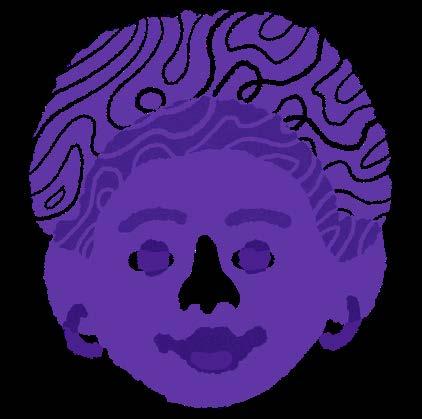
An exploration of Black history in B.C. academic fields

News Editor
“Eventually, her tireless political advocacy would lead Brown to become the first Black woman to sit in the Legislative Assembly of British Columbia.”
Black people make up less than five per cent of the Canadian population and face systemic oppression. It’s no secret that this oppression and erasure makes the strength and beauty of Black history across Canada unknown to populations outside of the diaspora. Dating back to the 1800s, the first major migration of Black populations, predominantly from the United States, began to settle in British Columbia in response to an invitation from Governor James Douglas, whose motive was to increase the population of B.C.’s colony to counteract the threat of American expansion. From this point onward, Black Canadians became immortalized in B.C.’s history despite the numerous systemic challenges of racism, such as forced resettlement.
Although not often marketed in primary and high school history curricula, B.C. has been a rather turbulent home for Black culture since the mid-1800s, which has thrived alongside the dominant white society due to the efforts of founding members of Black society in the province.
This includes Jamaican-born Rosemary Brown, who immigrated to Canada 1951. She would go on to become a McGill University graduate and complete her Master in Social Work at the University of British Columbia. Brown’s social activism and political advocacy is thought to have been heavily intertwined with her early experiences of sexism and racism as a young,
Black immigrant in Canada. A Master’s degree holder striving to establish herself as a young professional in a society that was not keen to accept her, Brown became involved in two social groups at the intersection of racial equality activism and feminism: the BC Association for the Advancement of Coloured People, of which she was a founding member, and the Voice of Women for Peace. With her own existence as a Black woman being at the intersection of political debates surrounding the deconstruction of traditional, colonial gender and racial norms in the 1960s, Brown was able to speak for the advancement of people of colour and women, and founded the Vancouver Status of Women Council (VSW). Eventually, her tireless political advocacy would lead Brown to become the first Black woman to sit in the Legislative Assembly of British Columbia.
Another pioneer of Black Canadian activism in politics, and a Vancouver local, was Emery Barnes, a long-standing member of the Legislative Assembly (MLA) for the New Democratic Party (NDP). Barnes was also the first Black person to serve as a Speaker in any Canadian legislature. Prior to his establishment as a professional in the political field, Barnes was also a professional football player for the Green Bay Packers and the BC Lions. Barnes lived an exciting life filled with community engagement and activism, managing to raise both himself and his local community despite systemic barriers and an
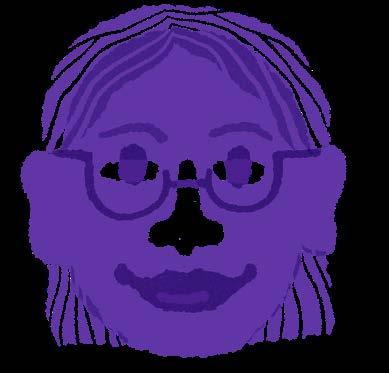
abundance of adversity. Despite Barnes’s passing, his legacy in British Columbia lives on in politics and the lives he was able to touch. He is survived by his daughter Constance Barnes, who continues her father’s work.
As a relatively young institution—founded only in 1968—CapU has a modest history within academia compared to other institutions in B.C. A strong Black history and culture within the institution is challenging to reminisce on, because the institution itself is still evolving as a unique space for learning and community engagement. While it can be difficult to link historic figures directly to the school, students in 2025 have the privilege of observing the creation of diverse cultures in real time, which includes the contributions of Black scholars and members of the greater Vancouver community.
In the academic department, CapU is home to an incredible scholar, who also happens to be a Caribbean woman of African descent: Susan Romeo-Gilbert. Having accumulated degrees and experience around the world, Romeo-Gilbert now pursues teaching and research in the CapU Faculty of Business and Professional Studies, with interests in topics ranging from Business Intelligence and Analytics, Information Governance and efforts to systematically address and resolve the issue of a lack of representation for Black women in technology the since 1980s. Her advocacy for showcasing the vast diversity of African cultures and history is not limited to exclusively research-based pursuits; Romeo-Gilbert has consistently demonstrated social organization and leadership as the Chair of the Planning Committee for Black History Month at CapU. The committee consists of 25 strong members and volunteers alike. The activities are ongoing throughout the entire month of February for this year’s 2025 pursuits.
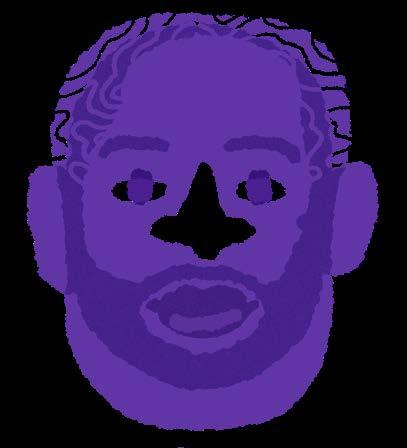
In 2024, Professor Romeo-Gilbert facilitated a month’s worth of community engagement, education and immersive cultural experiences for Black History Month. The theme was “Black Resistance” in 2023, and, “Black Excellence: A Heritage to Celebrate; a Future to Build” in 2024, both themes eloquently highlighting the literal history of the African diaspora’s resistance against oppression across the imperialist world, and emphasized the exploration of Black history itself—and its celebration in the modern era—as a form of resistance against systemic oppression throughout the past to present day.
Speaking with Romeo-Gilbert in anticipation of Black History Month 2025, she states that this year’s theme is “Black Excellence: Contributions to the Canadian Labour Force” as part of the Change Education Series. From building vital infrastructure to excelling in fields like education, healthcare, arts and technology, Black Canadians have been at the forefront of progress, innovation, resistance and resilience. Their contributions aren’t just moments in history; they’re milestones that are shaping movements for labour equity and workspace inclusion.
As the years before, 2025 has a jam-packed itinerary of cultural displays, educational presentations and traditional entertainment. Be sure to keep an eye on the university’s website for the amazing opportunities happening at CapU for 2025’s Black History Month. To conclude the essence of why Black History Month is such a vital part of the year, Professor Romeo-Gilbert reminds the student body and faculty:
“It is important to remember that any celebration is based on an understanding that African History pre-dates the history of slavery. The intention is to continue to educate the Capilano University Community on the pre- and post-slavery Africa’s influence on the world history stage.” -Susan Romeo-Gilbert
“Romeo-Gilbert has consistently demonstrated social organization and leadership as the project head for the entire month celebrating Black history at CapU.”
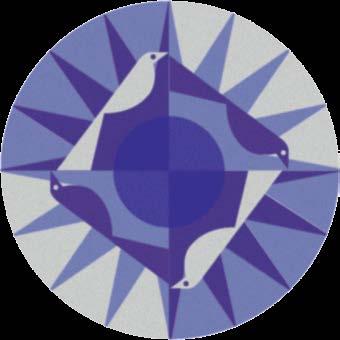
Kate Henderson (she/they)
Crew Writer
JJ Eng (they/them)
Illustrator
Offering 26 Fine & Applied Arts programs, Capilano University is vast in artistic expression; many different creations occurring simultaneously, where students can grow a love for their unique processes. The Courier investigates a variety of these processes, getting to the heart of our creative roster.
Frequent headphone-wearer and second-year Jazz student DaeLillee Baillie-McGillivray can be found on campus listening to Vince Guaraldi and transcribing music. As a self-defined musician, Baillie-McGillivray recounts the conversation they had with their, “trombone teacher Dennis, and he said, ‘just so you know, you’re not a trombone player, you’re not a composer; you’re a musician. Even if you all of the sudden couldn’t play your instrument, you’re still a musician.’”
“When people ask me what I do for work I usually tell them I work at a grocery store. If I’m lucky, one of my friends will be around to say, ‘No, you’re fucking not, this guy’s an actor,’” says thirdyear Acting for Stage and Screen (ASAS) student Joey Sim, who you may recognize as Mercutio from the Fall 2024 production of Romeo and Juliet . “I wouldn’t call myself an artist, because I don’t think I have the catalogue to back that up yet,” Sim said.
Justin Cahyadi is a fourth-year Motion Picture Arts (MOPA) student who you might find microwaving (prop) hamsters in his newest film, Hamster Film . Cahyadi echoes Sim’s approach to classifying his work, usually working ‘below the line’ roles in film (roles separate from the creative development of the project),
hesitating to call himself “a writer or director when [he] hadn’t made much of anything.” However, after Hamster Film , Cahyadi “feels more confident calling [himself] a filmmaker.”
While majoring in trombone at CapU, Baillie-McGillivray has always been engaged with music, playing instruments from piano to saxophone, and most of all, listening. “Now that I understand how music works, I get so much more inspired because I understand what they’re doing,” Baillie-McGillivray described the feeling that she, “can’t go on existing without playing” the song she’s listening to at the time.
“Inspiration hits me so unbelievably out of nowhere [...] but it hits me and I run with it” Sim specifies, “it’s more like a vibe that I can’t articulate [...] for Mercutio, I would literally just notice I’d start walking differently, dancing around to sexy music in the mirror, I’d be walking onto the stage shimmying and shit, and that’s when I would know it.”
When Cahyadi writes, he draws on real life experiences. “It doesn’t even have to be something insane,” Cahyadi explains, exampling his conversation with a man at an airport describing his watch, “the way he spoke about it, how much he loved his watch, the way he cares for his watches, it was a peek into somebody’s identity.” Cahyadi describes his inspiration to grow this story as “a yearning for how this could be more exciting.”
“I never really went to school with the intention of this being a job; I knew I was going to school to learn for myself, and because of that I really enjoy school,” Baillie-McGillivray shares. Their joy in the process grows when performing in a group, emphasizing respect for her medium that she’s, “so far removed from its roots,” referring to a lack of cultural connection to the Black American history of jazz music.
“I’ve heard music that makes me cry, and [seen] paintings that make me rethink what I value in art,” Sim reflects, noting that acting has opened his eyes to things he hadn’t known about himself. “When I was singing cabaret for a class, I remember as I hit the final note, I just started crying,” he explains his realization of the connection between him and his character. “Getting to feel that emotion in context, that you would never really experience, is cathartic.”
“You can take all those moments that you felt had that spark and energy, and bottle it, twist and pull it,” Cahyadi tells of the excitement of “warping reality” to stitch his creation together, while emphasizing the importance of creating with a safe crew. He uses the example of Hamster Film to explain, “I didn’t feel I needed
to be a tortured artist, it’s important to create an energy that can carry through your set environment.”
“If you want to paint realism, how are you going to paint without seeing?” Baillie-McGillivray relays a metaphor each interviewed creative shared, “You don’t have to pursue an art degree to be creative. I don’t think you have to be good at something creative to enjoy it [or] capitalize off of it.”
Sim emphasizes a “just do it” mindset and trust in one’s abilities, assuring that “the one thing you need to have in order to be an actor is slack for yourself. You need to be able to get up there and be like, ‘Okay, I guess I’ll try something else.’”
“Watch so many movies. Not just movies you like; watch movies you know nothing about. Sometimes, those are the greatest films you’ll see,” Cahyadi says, sharing a metaphor of creation. “It’s like I’m collecting colours; even if you mix them all together they become grey, sure, but find your colours for your painting.” Cahyadi shares that film is “inherently vulnerable” and judgement is inevitable. “It’s extremely important to create for yourself,” he says. “If all else fails, at least you will be able to cherish your creation.”
Baillie-McGillivray, Sim and Cahyadi paint their last words respectively, the words at the heart of their art.
“The world is happier when there’s music, and when there’s creative people because we get all these incredible things.”
“Have confidence, confidence that you will be kind to yourself.”
“Go take a damn walk, talk to people, stories don’t start on the page they start in life.”
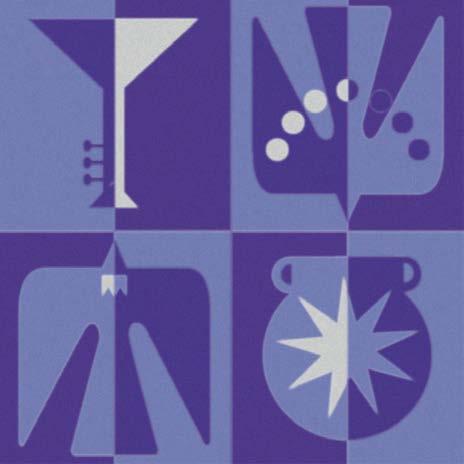

Learning how to live through laughter and where it’s gotten me
Contributor
Illustrator
“I was addicted to the instant gratification of matching with an attractive person, and it became a game of fulfillment and self-worth.”
Short-term, open to long-term. Six words that have haunted me as a heterosexual, single female in her twenties. I started using online dating platforms long before I should have, in both a legal and moral sense. Tinder, Hinge, Bumble, Raya; name the app, and I’ve swiped.
It started in my senior year of high school, which is far too early for anyone to be meeting strangers online. I spent the majority of high school in a serious relationship, and I was seeking a shortcut back to that deep level of connection with another person. Those feelings of being unwanted and unloved while everyone around me was finding partners began to seep in, I hated being alone. I was addicted to the instant gratification of matching with an attractive person, and it became a game of fulfillment and self-worth.
Seven years later, and here I am, still swiping away. I’ve had my fair share of one-night stands and days spent staring at the ceiling wondering why I’m being ghosted, but it hasn’t been all bad. I’ve met people online that I couldn’t imagine my life without. I connected with someone who I ended up dating for a long time, and although it ended, there’s no part of it that I regret. I’ve reconnected with old friends, new
flings and very interesting people who helped me create some core memories. While I was studying abroad, it was easy to use dating apps to meet like-minded solo travellers so we could both feel a little less alone in strange new parts of the world. It’s true that there’s still a stigma surrounding relationships that begin online, but the way I see it, dating apps allow people who are confident enough to know what they want to be proactive in finding it.
Dating apps have also led to some wildly entertaining stories shared between my friends and me. My friend and I once matched and went on a date with the same guy on the same weekend. He took us both to the same restaurant. My best friend was even ghosted by a famous DJ she met online after she sent a photo of herself to him.
While some of us might still be impatiently waiting for ‘the one’ to come along, I haven’t written dating apps off completely. I keep my guard up, as most women do nowadays, and I try not to let myself get invested too quickly. It does still feel a bit hopeless sometimes, but as Ginnifer Goodwin taught me, there’s always an exception to the rule.
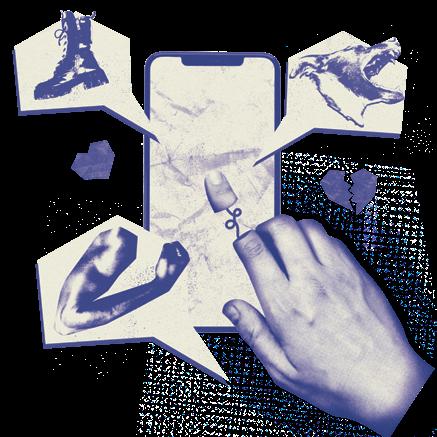
A masculine experience with the harsh realities of dating apps
Contributor
“We bow down to the dating algorithm, hoping to find whatever connection we so desire, be that a torrid one night affair or a blossoming romance.”
The screen illuminates dreams of connection, promising to warm our empty skin.
It is no secret that the internet has sunk its teeth into all facets of society, the ever-ancient practice of love being no exception. We bow down to the dating algorithm, hoping to find whatever connection we so desire, be that a torrid one night affair or a blossoming romance. While I could sit here thumbing my nose up at this new means of connection, to do so would be so disingenuously sprung from one who has found love within the hallowed halls of digital dating. The apps entice me from the home screen, urging the possible connections which lie at my fingertips. A game, a series of dopamine firing swipes which no junkie can resist. Swipe, swipe, swipe. Real people reduced to a flick of the finger.
*MATCH* > Fireworks explode in the brain. Could this be my true love, or just another dead end? Black holes of vapid life-sucking chitter-chatter, followed by an onslaught of disastrous dates. Alas, maybe my forefathers were better off… Nay, these are surely rosy imaginings which forgive the many misgivings of love’s past. I would never deny the entrancing allure of a fiery chance encounter, but I’m happy
to do away with the atrocious concept of the ‘blind date,’ or the hopeless romantic who peruses bars for weeks on end, nevermind an introvert such as myself. It is often said that the newer generation is increasingly vapid, but has dating not always been exceptionally shallow? Now, at least we get to wade these depths with a freedom unbeknownst to the past. Democratically swimming within the pool of connection, choosing how we’d like to traverse, all from the safety of our own home.
If I keep waiting, maybe someone will find me.
*MATCH* > The heart skips a million beats. Will this stranger provide what I so very desire? A profile of possibilities; dreams balloon. Love blossoms out of the pitter-patter of much contemplated keystrokes delivering texts of romance. Texts become video calls and those become coffee table dates. A new love flourishes. All it took was a few failed conversation stages and some awkward first dates, but finally, a star sparkled in the sea of darkness. I found myself madly in love with someone I would’ve never met ‘in the real world.’ Thank you internet gods!
February 12th is Darwin Day, here are some reasons why science shouldn’t exist
Sean Finan (any)
Crew Writer
Val Kruglikovskaya (she/they)
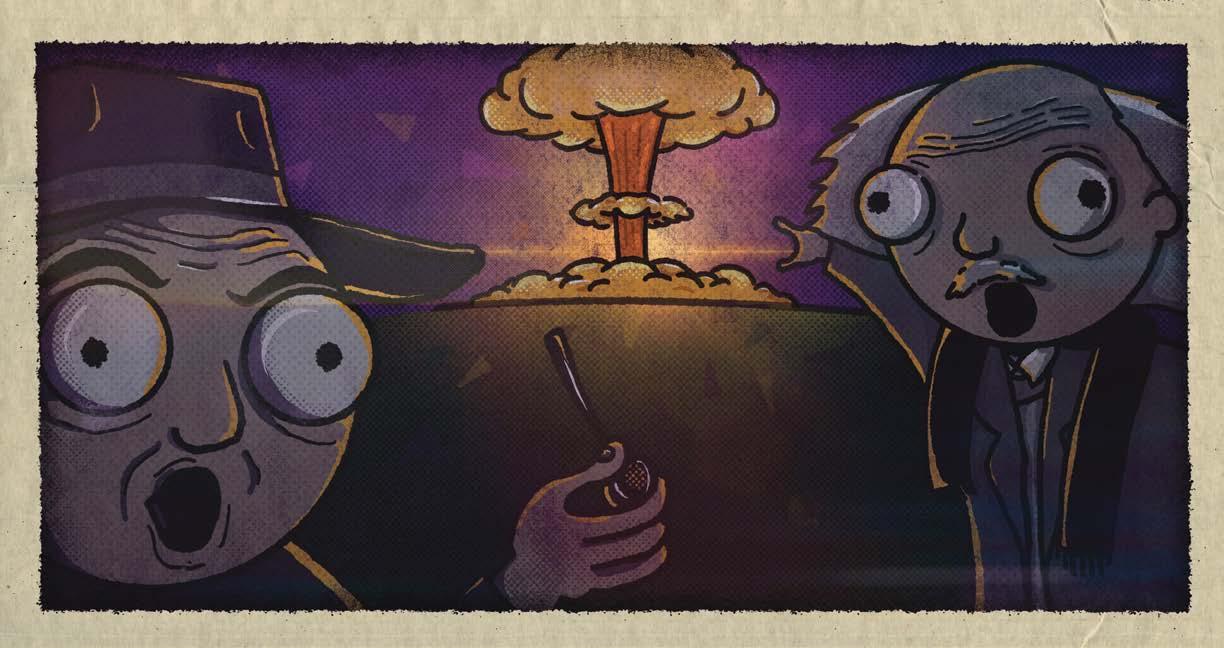
February 12th is Darwin Day. Kind of weird to celebrate some weird white guy in the middle of Black History Month… Anyways, apparently he invented science or something? There are plenty of people that believe this guy and plenty of people who don’t. I barely know who he is to be honest with you, and at the end of the day, it doesn’t matter if he was right about us being monkeys or frogs, because I feel like we are still the least evolved species, with the most issues, giving the most fucks. Science continues to fail us and we are desperately in need of some magic. Where is Dumbledore’s day? They basically look the same and Dumbledore is outlandishly more captivating (and hotter).
Without a hint of ado, here are my
People used to be roaming around, fornicating willy-nilly before Charles Darwin stepped in and invented the condom. Now birth rates are down and satisfaction is at an all time low. Fuckboys are rampant and it’s all thanks to the plastic sock we put on penises. Not to mention pornography. Without Darwinian cameras and computers there would be no porn, and the world would not be poisoned, we’d be running in the woods half naked as we should be.
Before Darwin invented the razor, hair grew long, down to our ankles. And it was beautiful. Now we have to see people with fades and buzzcuts that are frankly quite disturbing. The invention of shampoo has also stripped us of our natural grease that should be dripping from each lock.
3.
Dude, the environment sucks now thanks to science. Everything is so grey and shit. Scientific garbage is all over the place and everything is fucked.
Explanations make things boring! The reason magic shows aren’t a thing anymore is because everyone tries to explain it with some bullshit scientific answer. People back in the day used to just say, “Wow, that’s cool!” or, “That’s witchcraft, burn them at the stake!” Both are way more fun than our New Age scientific demonstrations like space travel or something dumb like that.
Before science could explain them, drugs were taken with almost no ability to prepare! The knowledge around them was completely hearsay. And we didn’t know how bad they were for our bodies. Thanks to Darwin and his science we all have to be painfully aware that our habits are destroying our bodies.
I hope you enjoyed reading this and I hope that you spend Darwin Day neglecting the bogus scientific doctrines impregnated in your mind and have some fun.
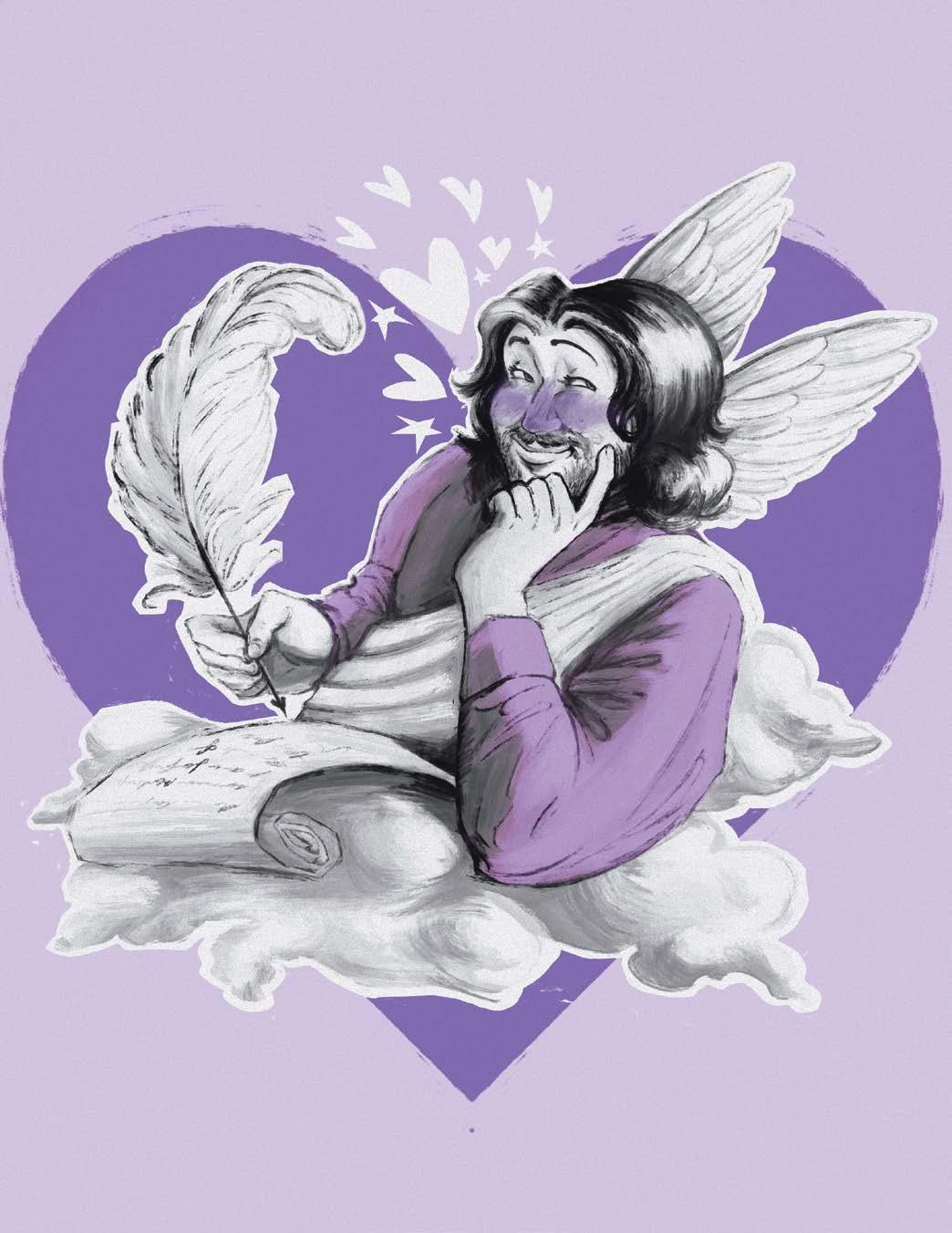
Adam Wallace answers various contributors’ questions about a crazy little thing called love
Q: Recently, my girlfriend moved to Toronto for university. While we still love each other very much, the distance between us is tough. Is there anything to do to make a longdistance relationship easier?
Ahh, a very classic question. I get this one all the time. You hear a lot of people advise against doing long distance, but it can absolutely work.
In our wonderful age of technology, we have the ability to keep track of where everyone is at any time, something that has transformed relationships for the better. What you need to do is be in constant communication with your girlfriend and consistently ask her to drop pins showing her exact location. Now, there’s a chance she could refuse, saying you’re being overbearing, but what I would say is this: what is she hiding from you? Your girlfriend is currently in the midst of meeting plenty of new people, and it’s difficult to imagine she wouldn’t have sexual chemistry with some of them. It’s not unfounded to assume she’s surrounded by people more attractive than you, smarter than you and richer than you who are all actively pursuing her sexually. Don’t panic! You can easily stop this by constantly reminding her that you exist.
Another tip I’ve found is, as opposed to lazily sending her nudes via the internet, get professional boudoir photographs taken of yourself, and send them to her in the mail. No woman can resist professional boudoir photography. All in all, good luck my friend!
Q: I was dating this girl and she ghosted me, then saw me in person and apologized. Then, she ghosted me again. We both go to CapU, so I’ll probably see her again. What should I do?
Now, this one’s tricky, but the Love Doctor has a solution! You see, it’s incredibly rare that someone is ghosted without cause. Perhaps your personality sucks. Perhaps, your face is simply ugly and it upsets her to look at you. Perhaps your body is gross. But there’s nothing you can do about that. But I do know what you can do.
See, you need to learn as much as you can about this girl without her noticing. While she may have ghosted you, you can be the ghost around her, watching her and seeing what she does, where she goes, etc.
Now, don’t contact her directly at first. Simply do some recon for later use. When you do finally come into contact with her again at a natural point, play it cool. You don’t even care about her ghosting you. It didn’t affect you in the slightest, but now you’re armed with knowledge of her that you can use for whatever purpose you see fit. If you want her to like you, you can use that knowledge to your advantage. Similarly, if you want to get back at her, you know her schedule now, and can much more easily frame her for a crime she didn’t commit. Either way, you come out on top!
Q: I fell in love with an American dude, but he won’t move to Canada and I’d never live in the U.S. What should I do?
Well, I’m sorry to have to tell you this, but you’re the one who’s going to have to compromise. I don’t know why you wouldn’t want to move to the United States, they’re obviously a superior country to Canada. Next question!
Q: I’m a communist and I fell for a dude that turned out to be in love with capitalism. Deal breaker, or is there hope?
Hmm. Now, I don’t want to get political here, but the obvious answer is that you need to stop being a communist. He’s right to be in love with capitalism. Capitalism is a beautiful thing! Without it, we would never have Jell-O, the Slap Chop, Funko Pops or the Marvel Cinematic Universe. Do you really want to live in a world without those things? Of course you don’t! So, my advice is to change. You’re clearly being suckered into a madhouse of political nonsense.
Q: I started dating this guy who said from the beginning that he wasn’t looking for a relationship, but now he’s making lots of plans that seem like relationship behaviour to me. What should I do?
Now, this is a conundrum, but I do have some solid advice here: you need to test the waters. How, you might ask? Act a little unhinged. Break something important to him. Bring up the possibility of having a child with him. Lie to him and tell him you gave your co-worker a handjob the day after your first date. Ask him if he’d break up with you if you killed small animals. Tell him you were once sexually aroused after witnessing a bus crash. The answer to all your questions and more lay in his reactions.
by Sofia Musa
Complete
ACROSS
1 Sticks together
6 Designer bag Michael
10 Katy Perry's ferocious song
14 Animated chameleon played by Depp
15 Resting on 16 French fashion magazine
17 Agree to, online
18 They blessed the rains down in Africa
19 Eve's counterpart
20 In a very surprising manner
23 Often used to describe small dog breeds
24 Like the water of the Seine
25 Scythe and Catan
Currently, in text
Jazz Baker
Seydoux from Dune 2
F1 event
What one may do at a table
Not the sciences
Makes a priority
Game where you may draw 4
Word that can precede "dead" or "out"
HAL 9000 and ChatGPT 48 Unit of fungal reproduction
Period of time
Humanities degree
Where one may go to elope 58 Taylor Swift won 40 of these 60 To love in spanish
Egypts capital
When repeated, "so-so" in italian
Think over
More aged
Hardy and Holland
Broadcasts to raise awareness
Between rain and snow
32 German address for a married woman
Like a famous Russian Catherine
Makes (as in money)
Cowboy tool
Ghostly fluid
Togetherness 4 Breakfast food popularized by Stranger Things 5 Shakespeare's favourite poems 6 Japanese breaded chicken
Short for a surgical fat removal 36 What you definitely should be getting checked for if you have multiple sexual partners (at LEAST once per year)
7 However, in text 8 Indian flatbread
39 Ivan the Terrible and Alexander I
Complete disasters
Often found in ERS or ICUS 46 Makes fresh again
9 Phenotype of the guy that lives in a pineapple under the sea 10 Royal domain 11 Traumatizing dog movie
12 Penne ___ vodka
13 Everybody Hurts, especially this band
Rock band that recently reunited to tour 50 Noblemen beneath a viscount and above a marquess 51 Groom counterpart (hetero)
21 What one may use to measure 5 down
22 Slang for handgun
26 Where something may come apart at
52 Sir but make it informal
“Be a good _____.” 55 Won a war against Australia 56 Black tie event 57 How you’d describe someone over 6ft
Division in a play
Cow sound
56 Black tie event
57 How you'd someone
58 Division in 59 Cow sound
Here are some more articles to expect published on our website, capilanocourier.com:
Illustration by Jordan Richert for What The F**k Is Up With (How People Talk About) Taylor Swift
PRINTED ON 100% Forest Free Paper SUGAR SHEET
• The CSU has a new Elections Administrator
• From Recovery to Victory: The Invictus Games Arrive in Vancouver and Whistler
• Lasers, Dinosaur Suits and Electronic Beats, Oh My!
• What The F**k Is Up With (How People Talk About) Taylor Swift
• A Pacifist Loser’s Guide to Becoming Unbullyable
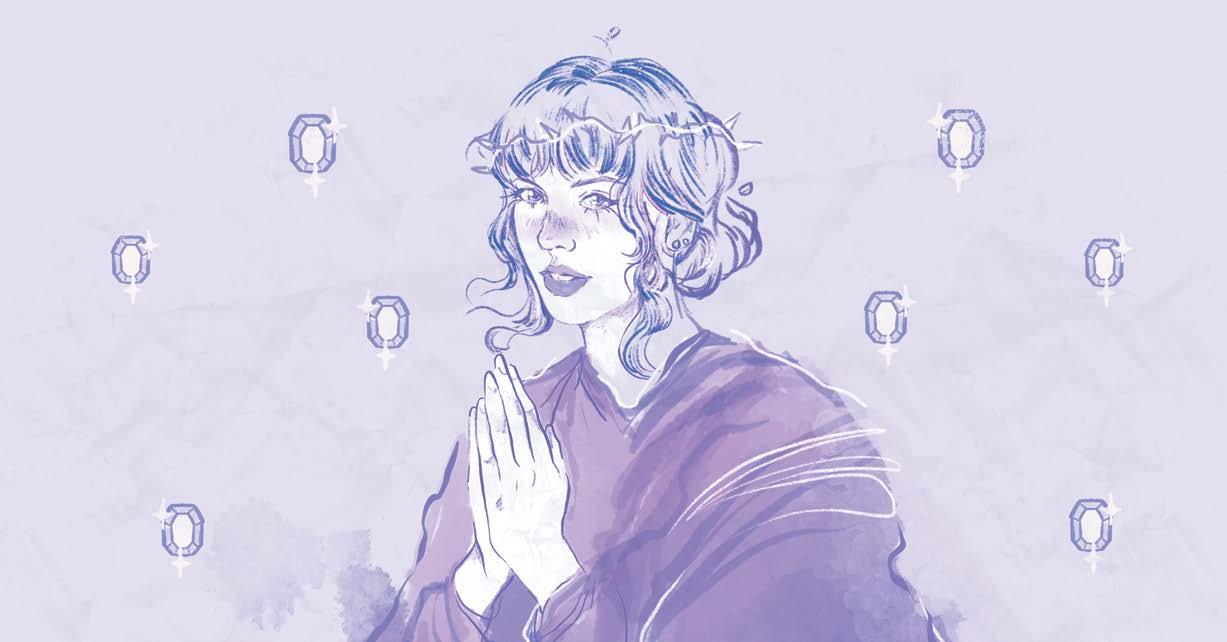
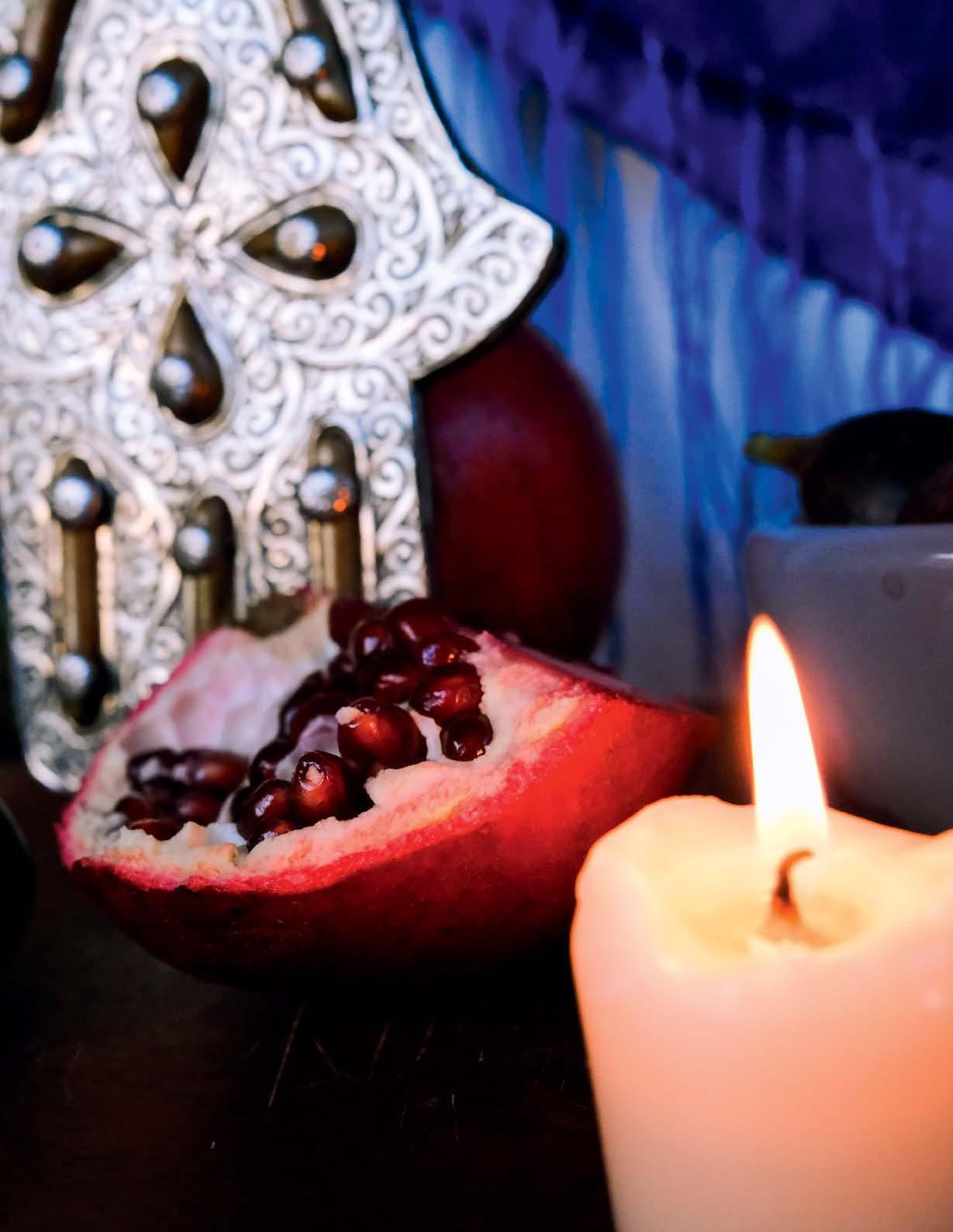
CAPILANO UNIVERSITY is located on the traditional unceded territories of the LíỈwat, xʷməθkʷəỷəm (Musqueam), shíshálh (Sechelt), Sḵwx̱wú7mesh (Squamish) and SəỈílwətaʔ/ Selilwitulh (Tsleil-Waututh) Nations.
We recognize our presence here as guests on this sacred land and deeply appreciate the privilege to work, study, and reside in this remarkable place. The Capilano Courier acknowledges that this gesture is just a starting point on the path to reconciliation, and we are committed to amplifying Indigenous voices and sharing their stories.
THE CAPILANO COURIER is an autonomous, democratically-run student newspaper that encourages literary and visual submissions. However, all submissions undergo editing for brevity, taste, and legality. We are committed to not publishing material that the collective deems as promoting sexism, racism, or homophobia. The views expressed by the contributing writers are not necessarily those of the Capilano Courier publishing society.
Additionally, we prioritize a human-centered approach to content creation and do not support the use of AI in our editorial processes. We believe in the value of human perspectives and storytelling in our publication.